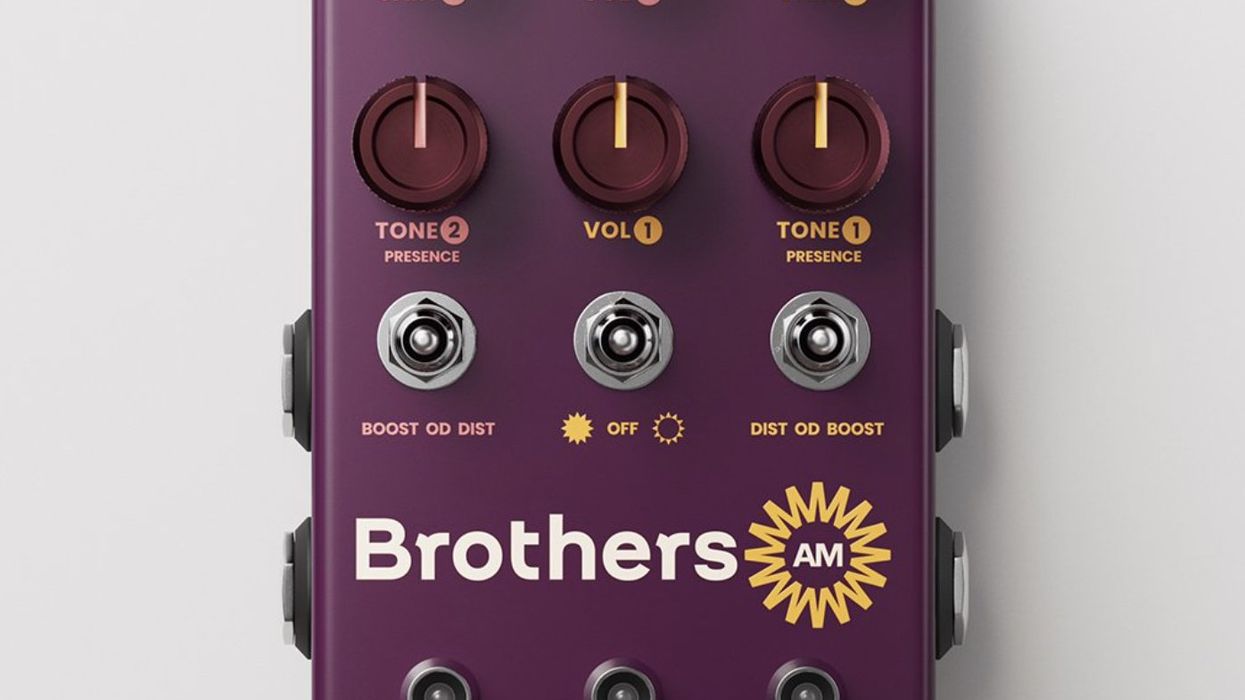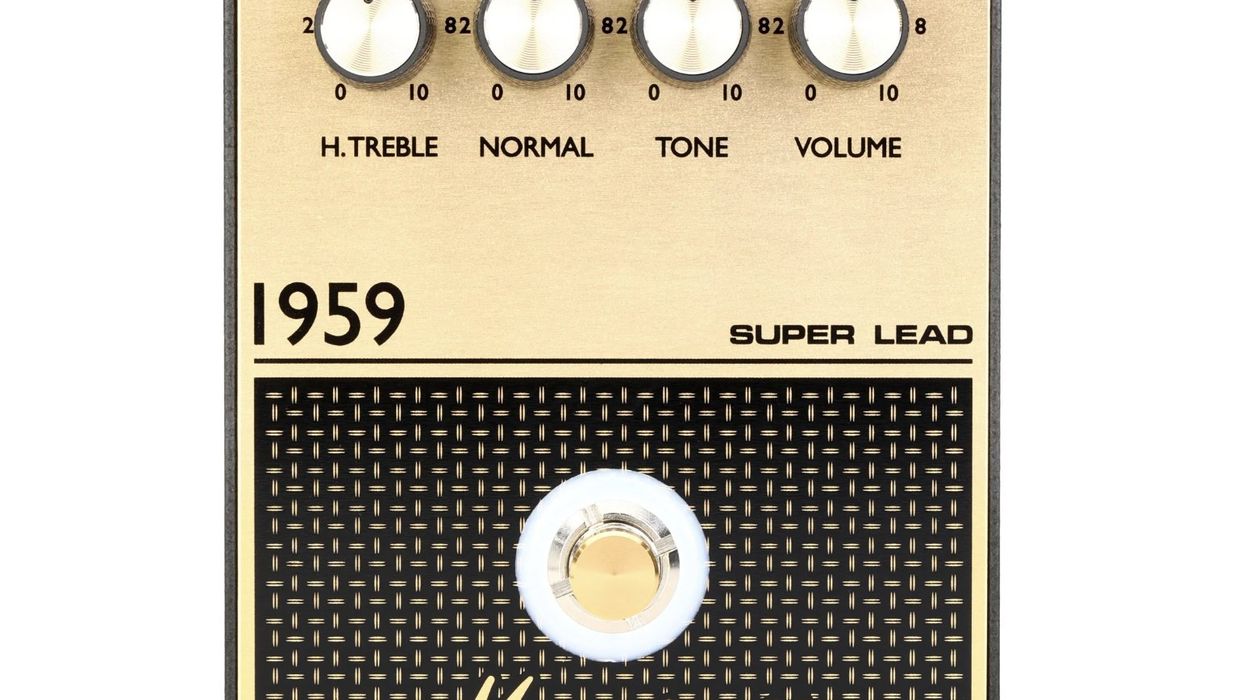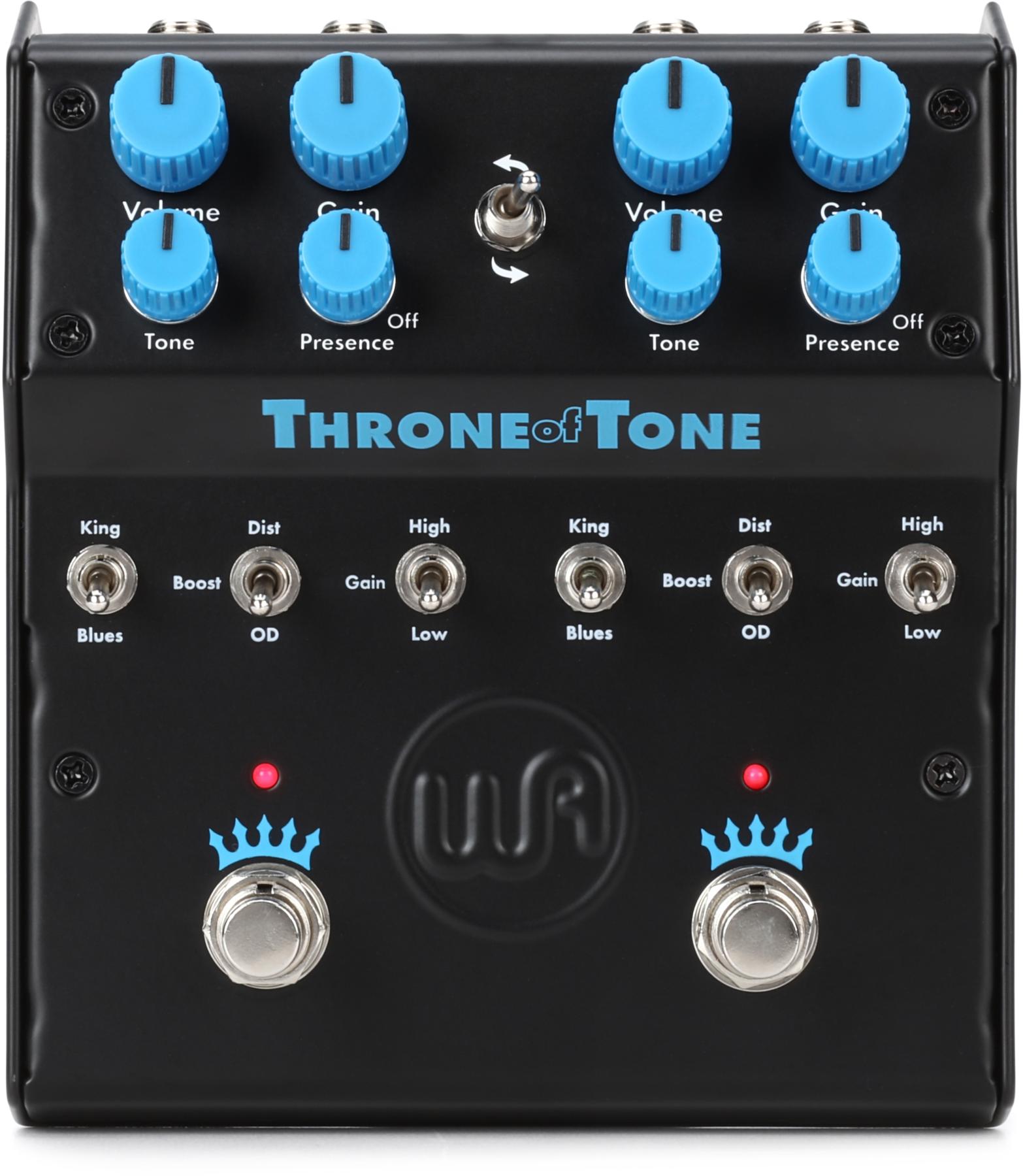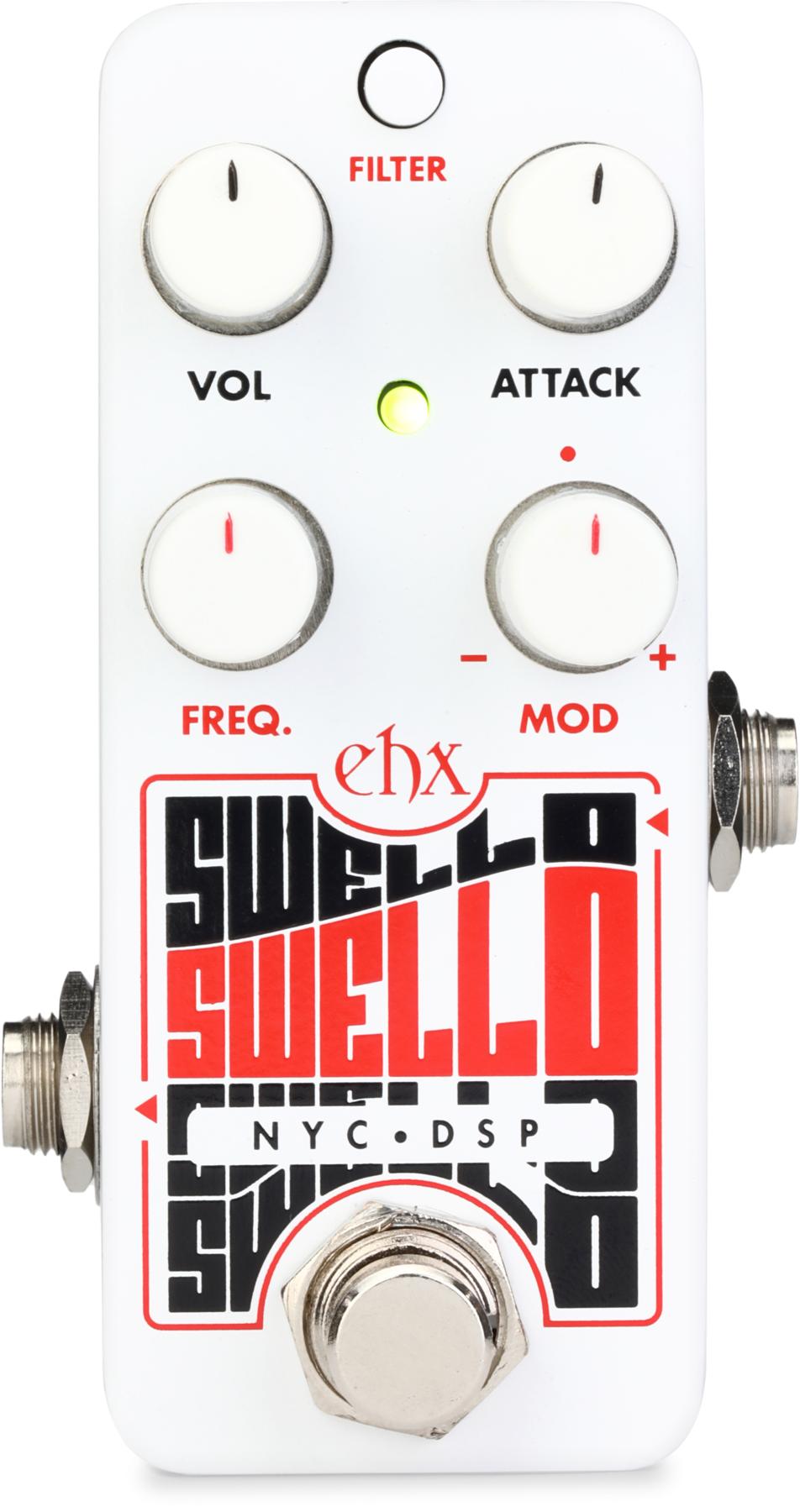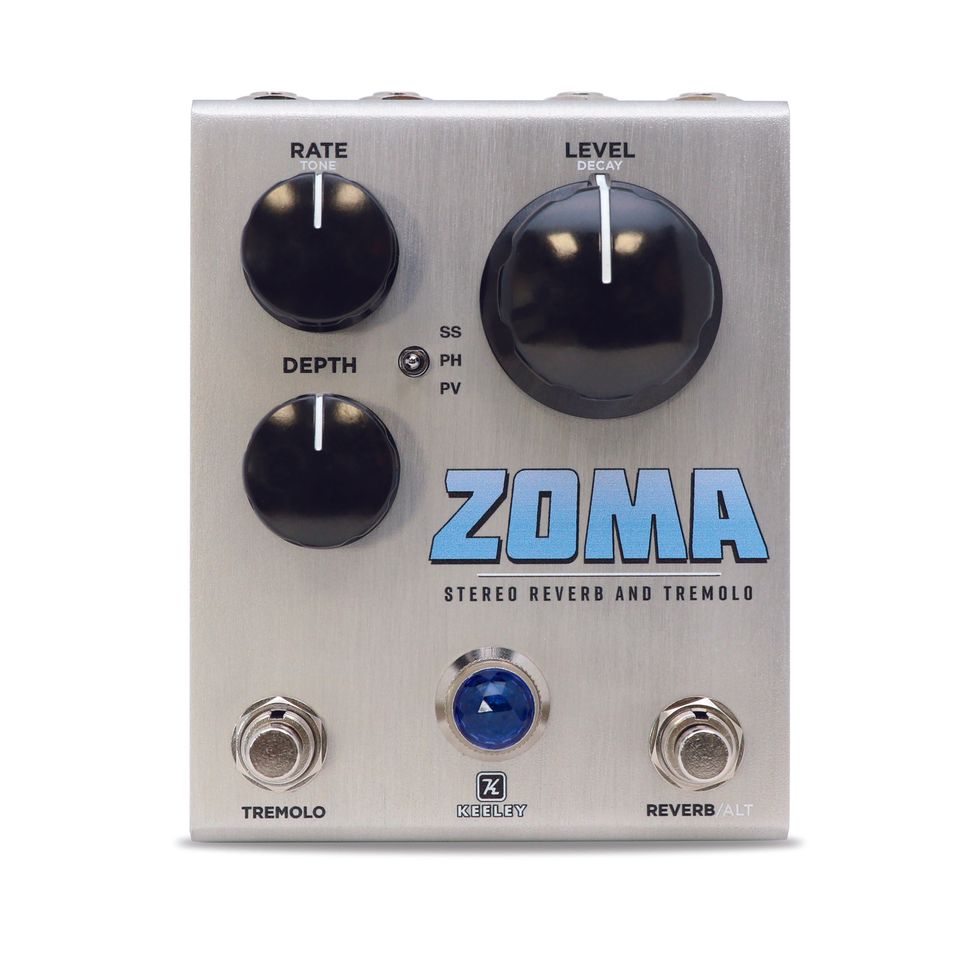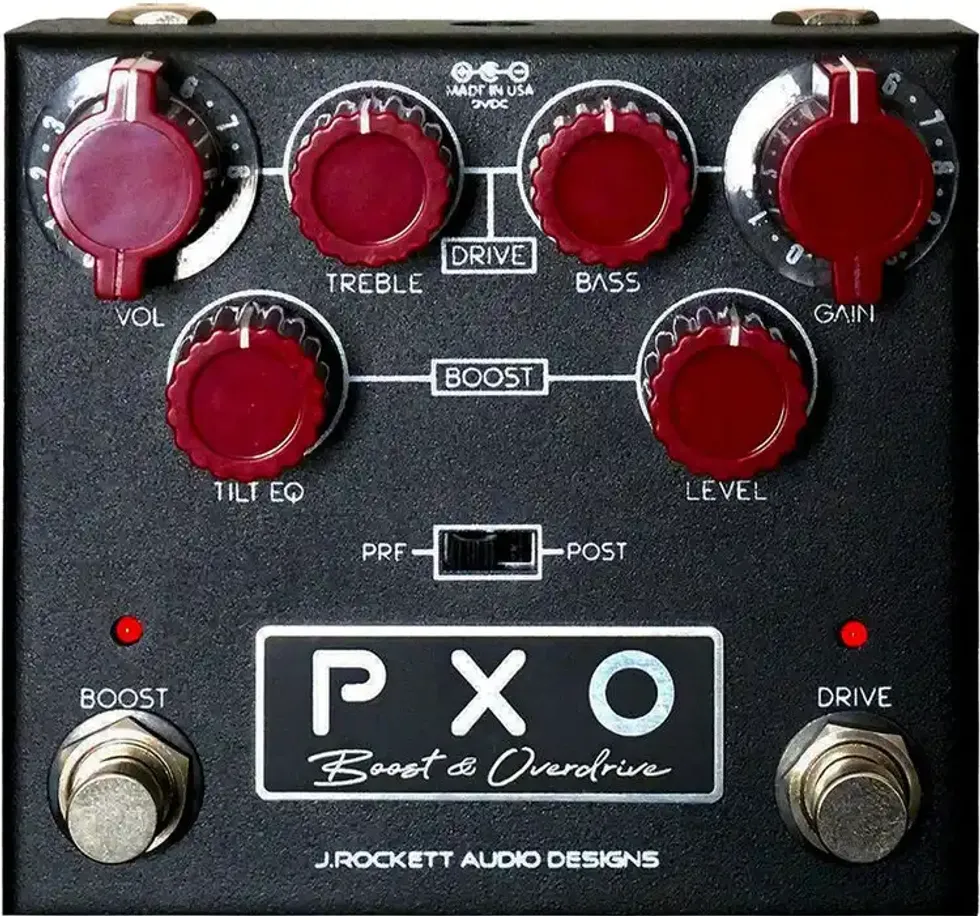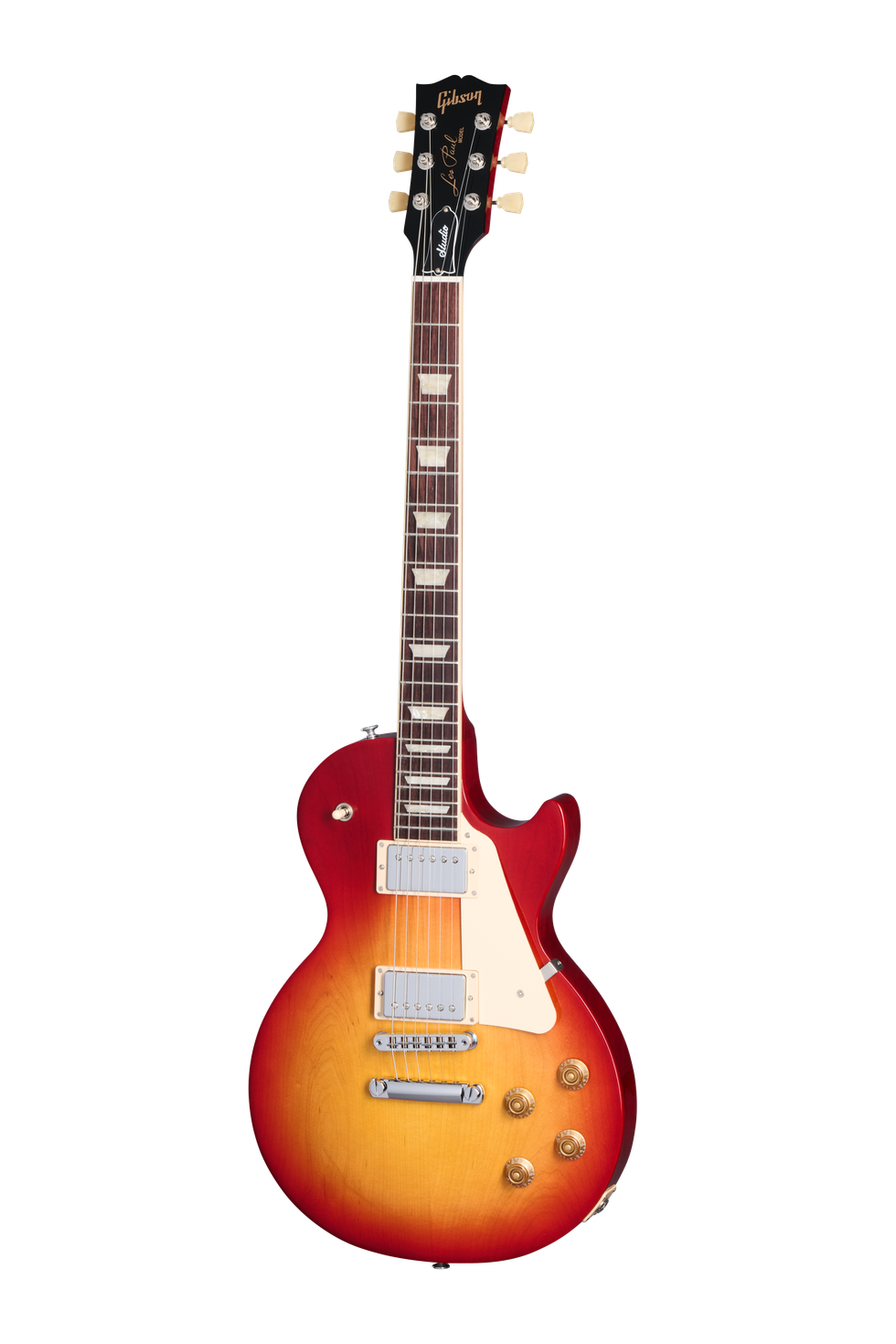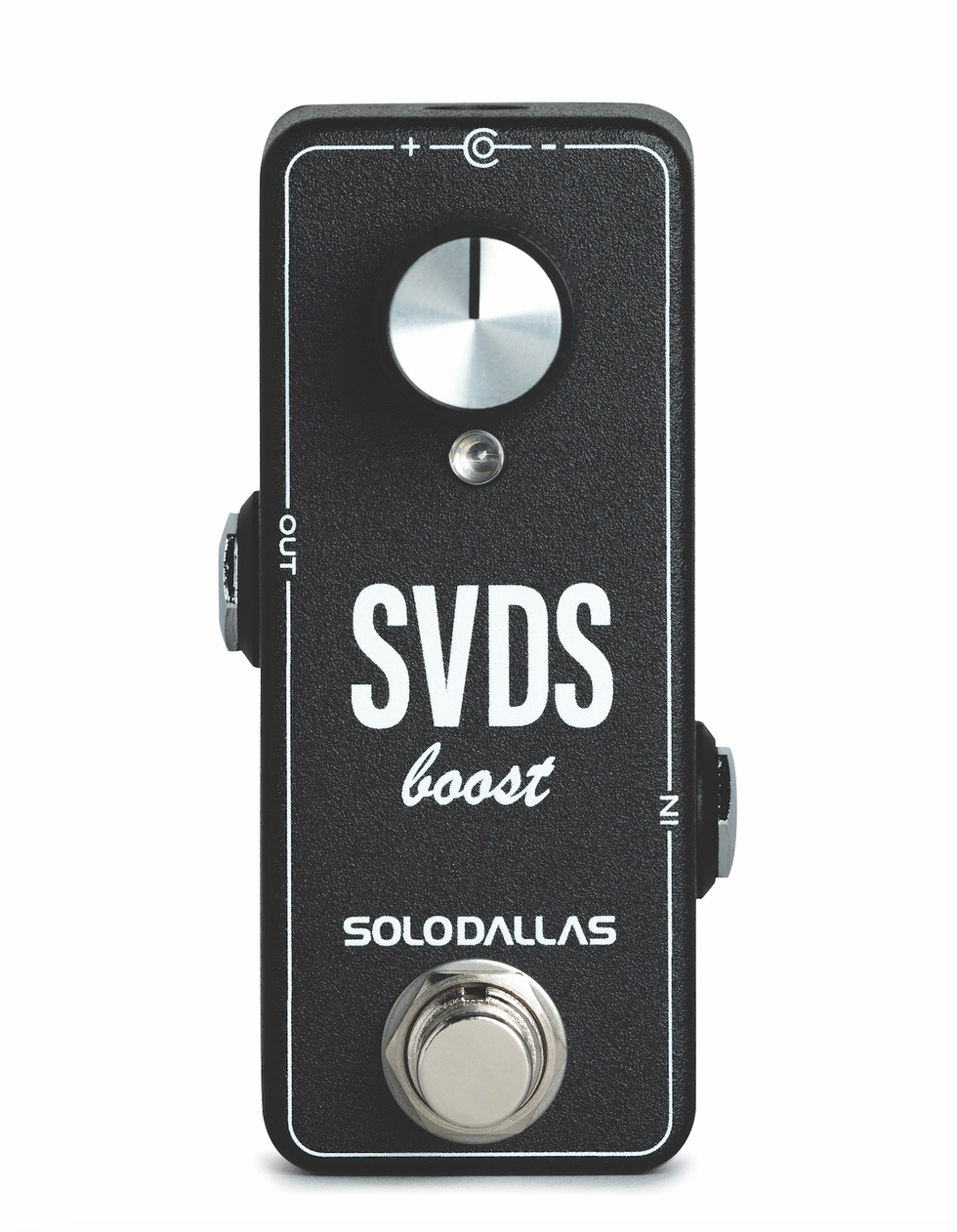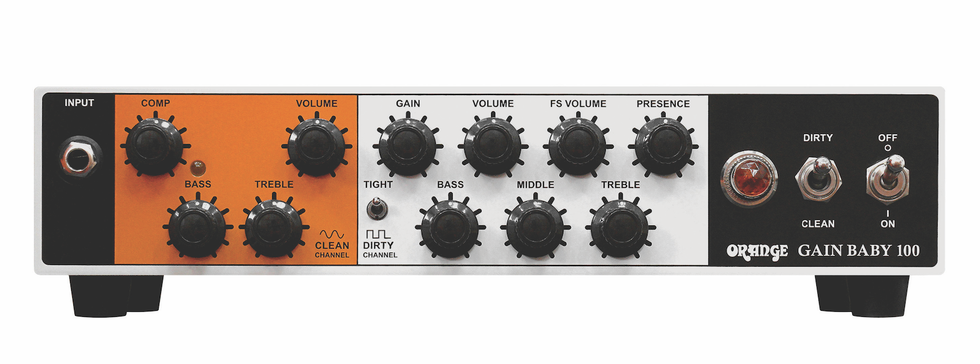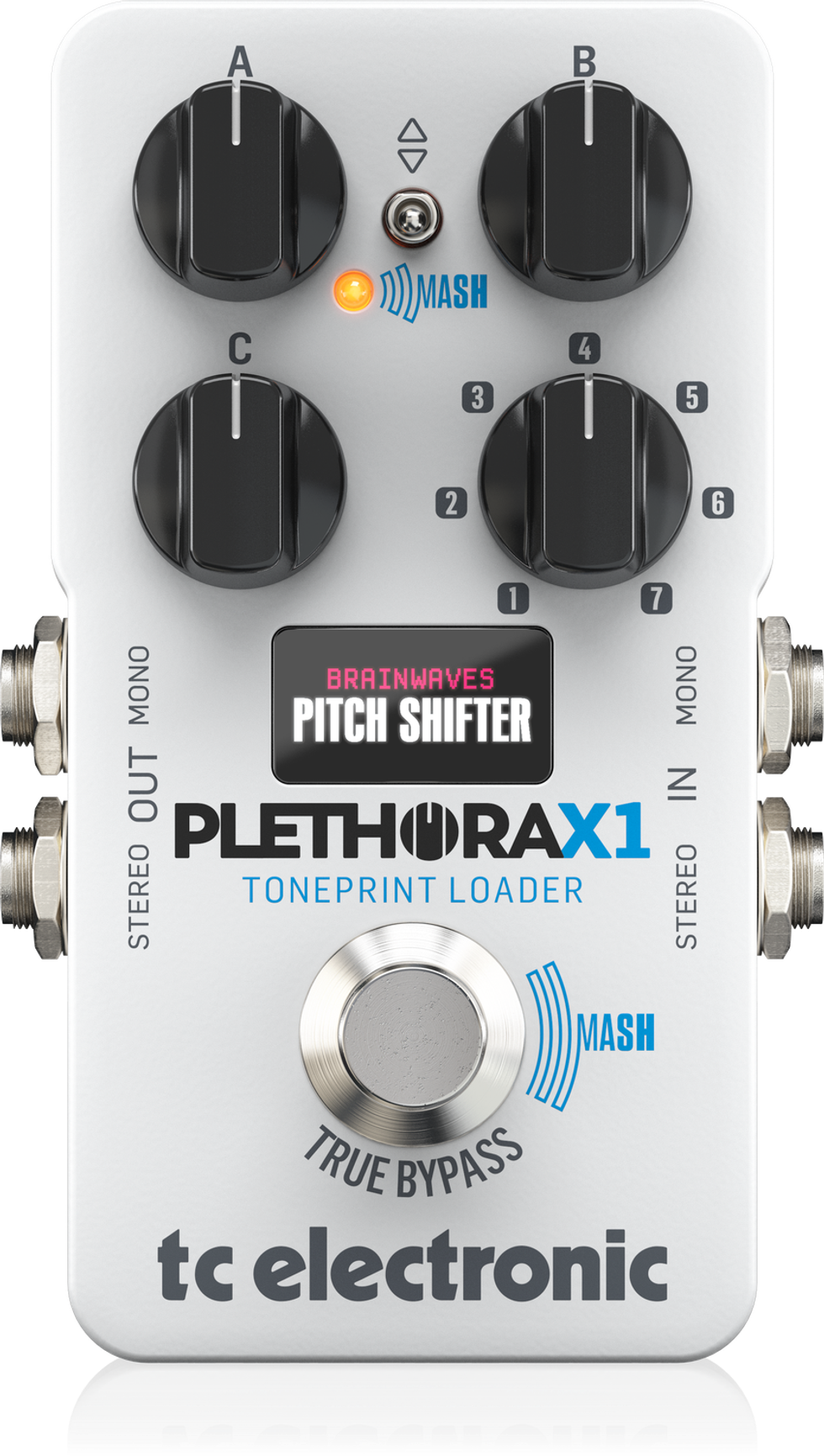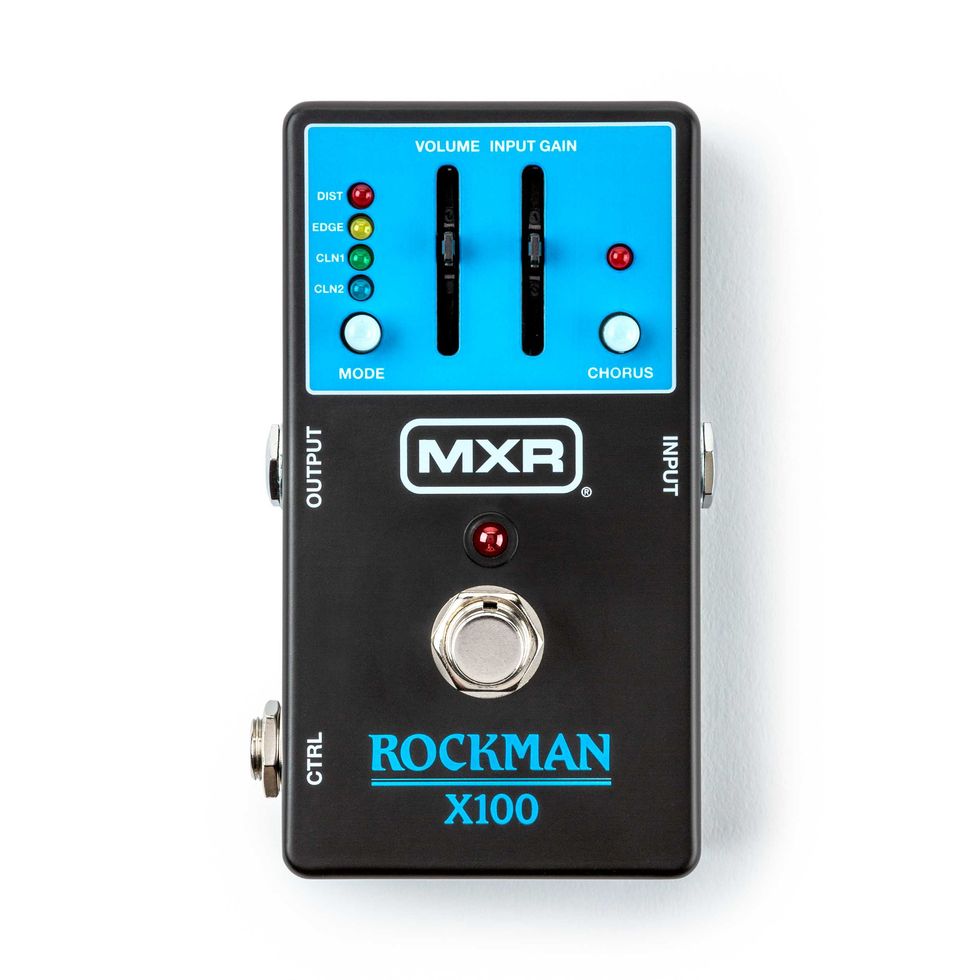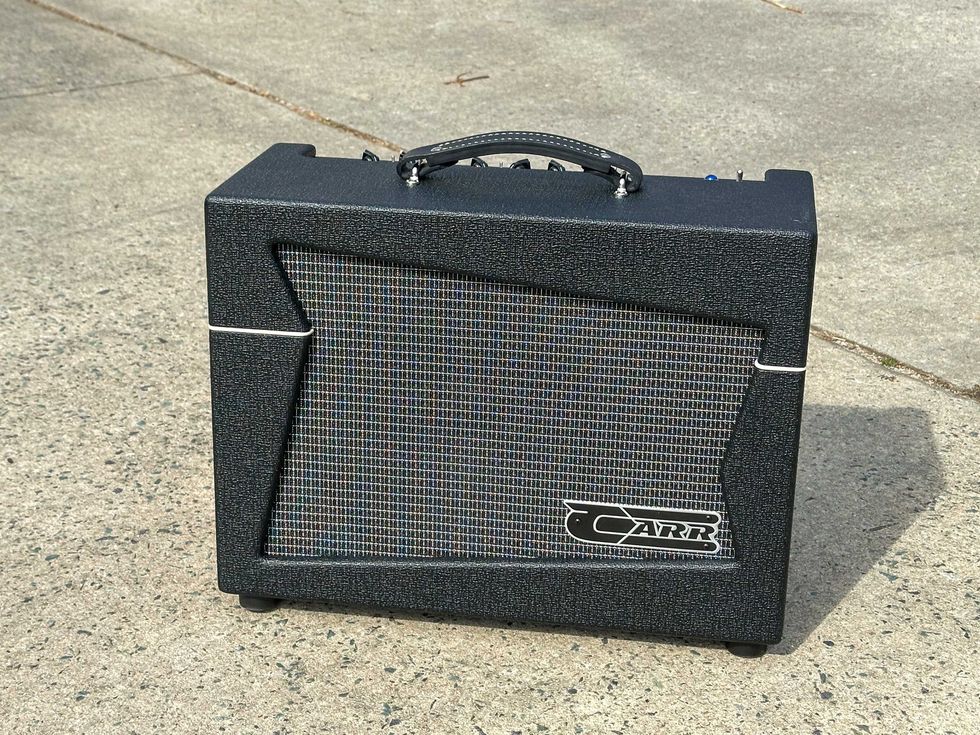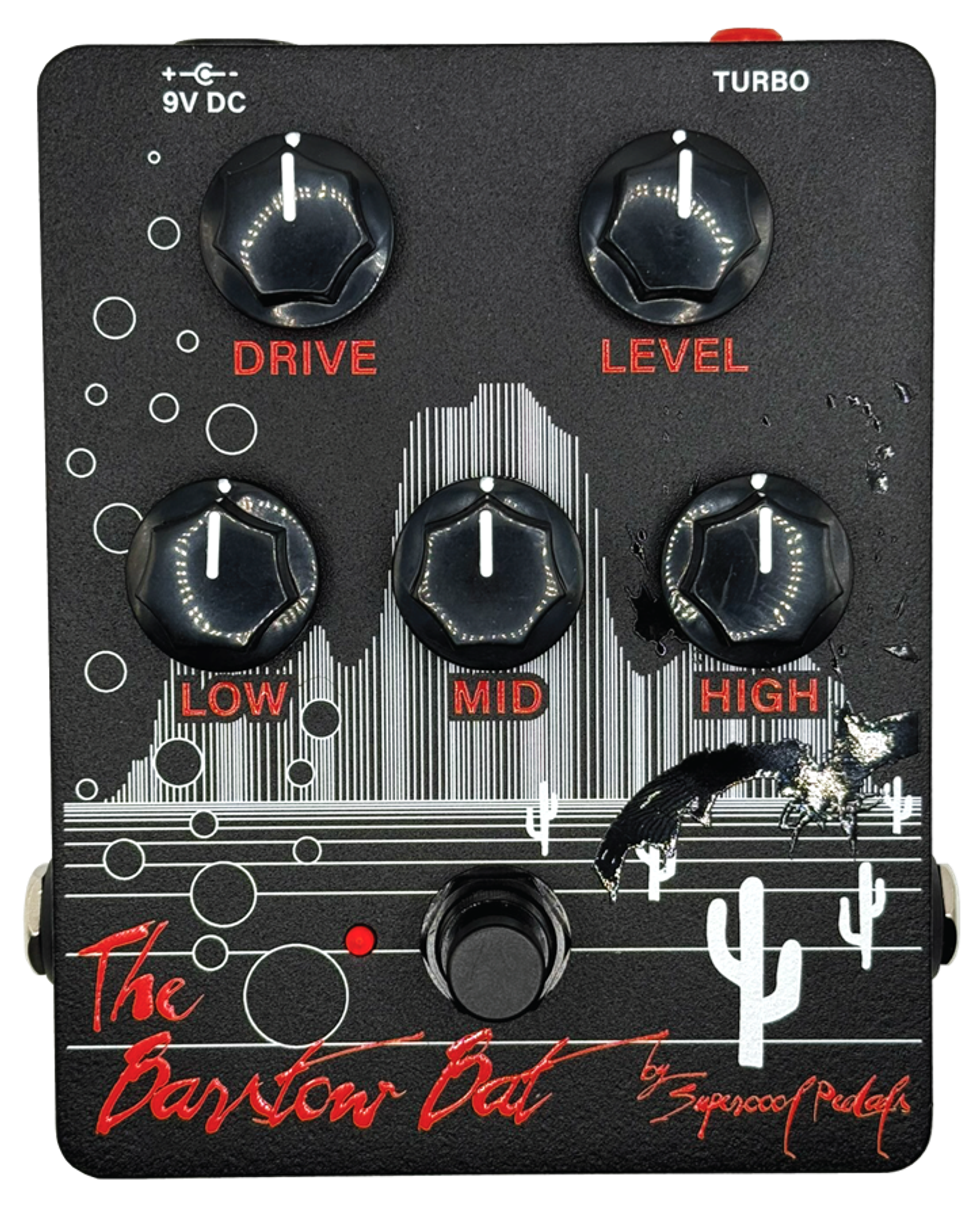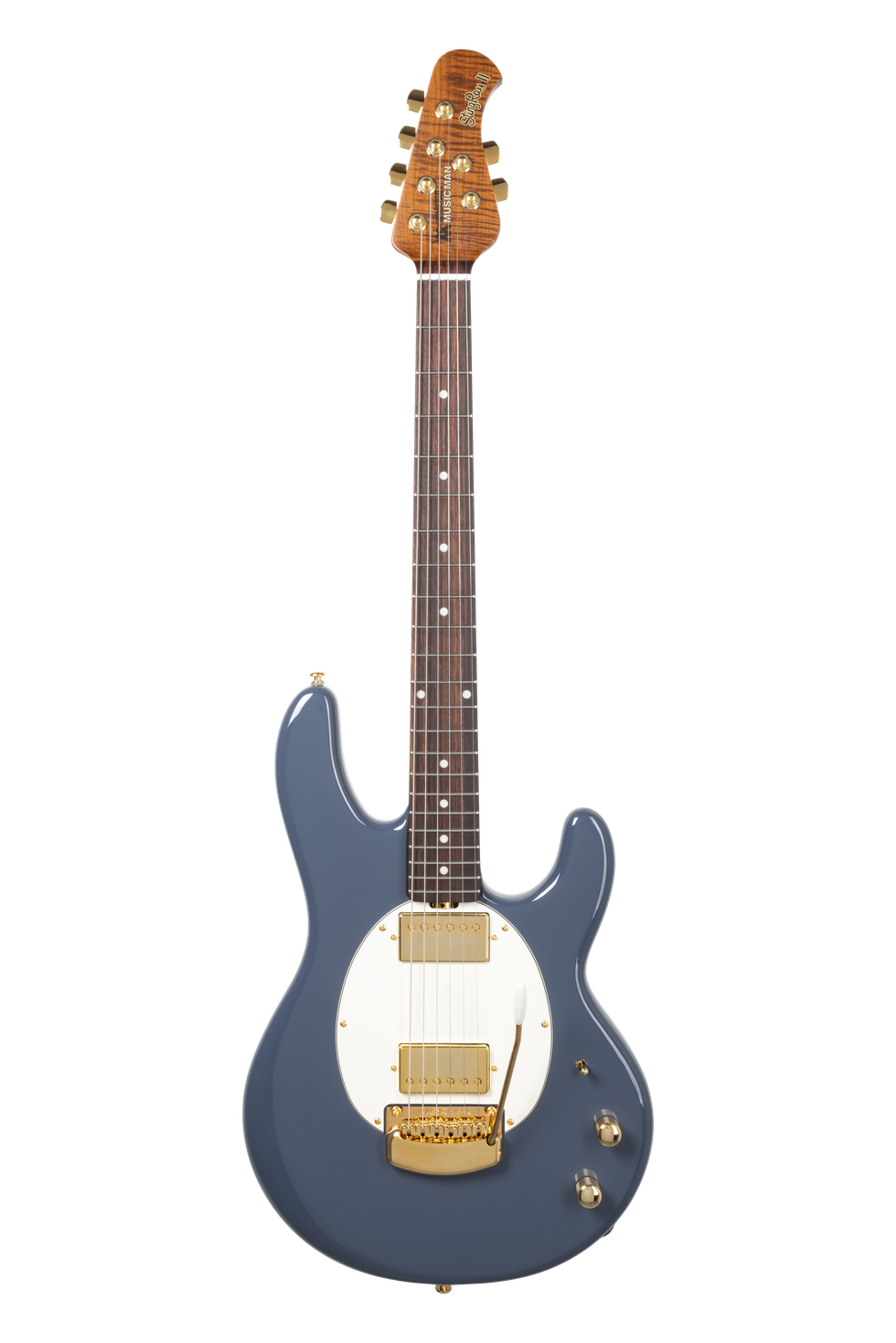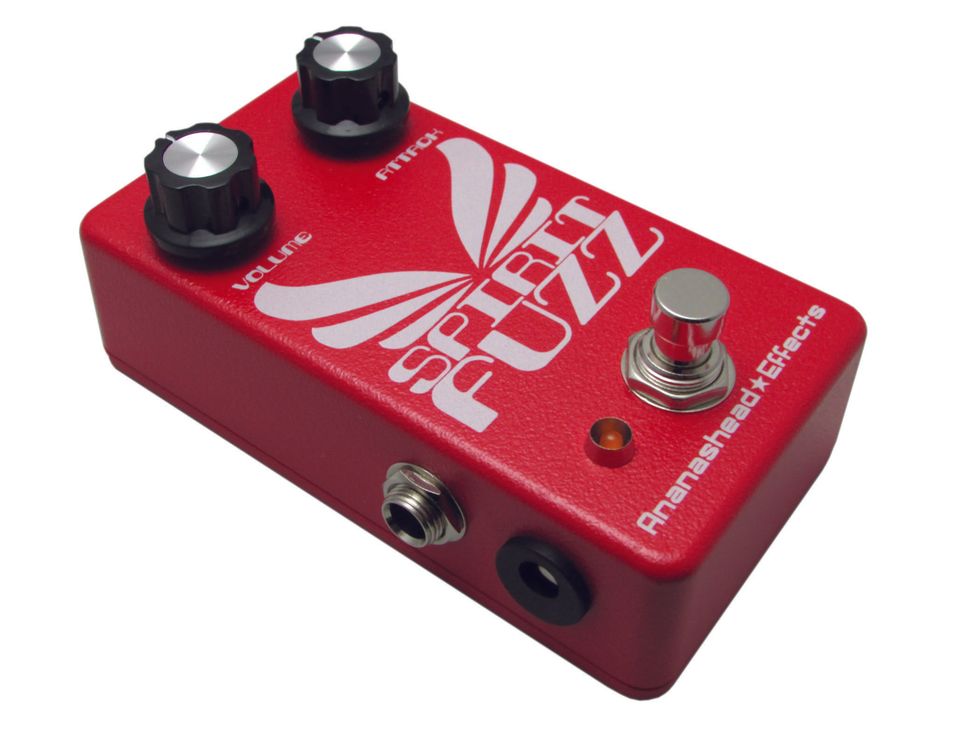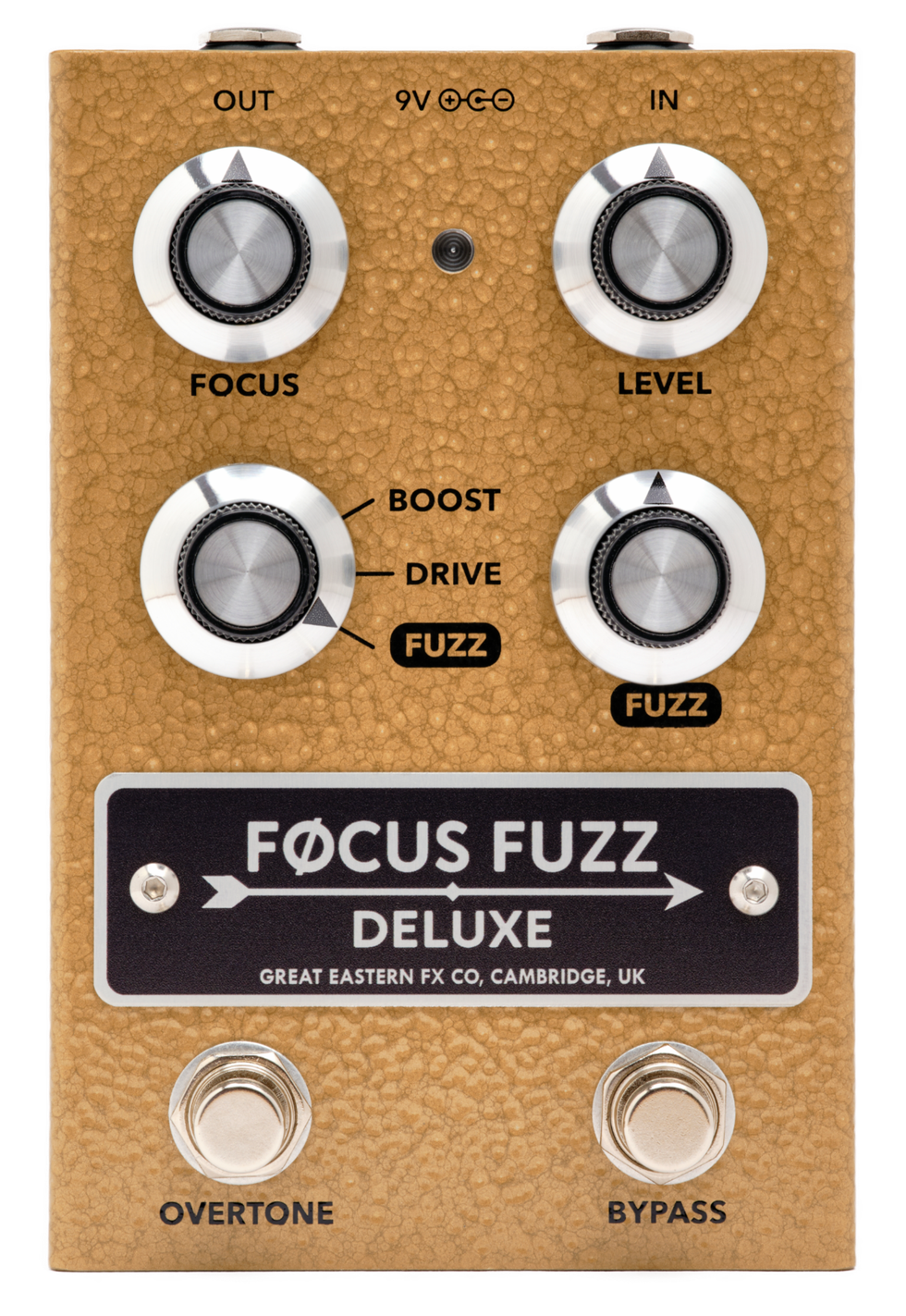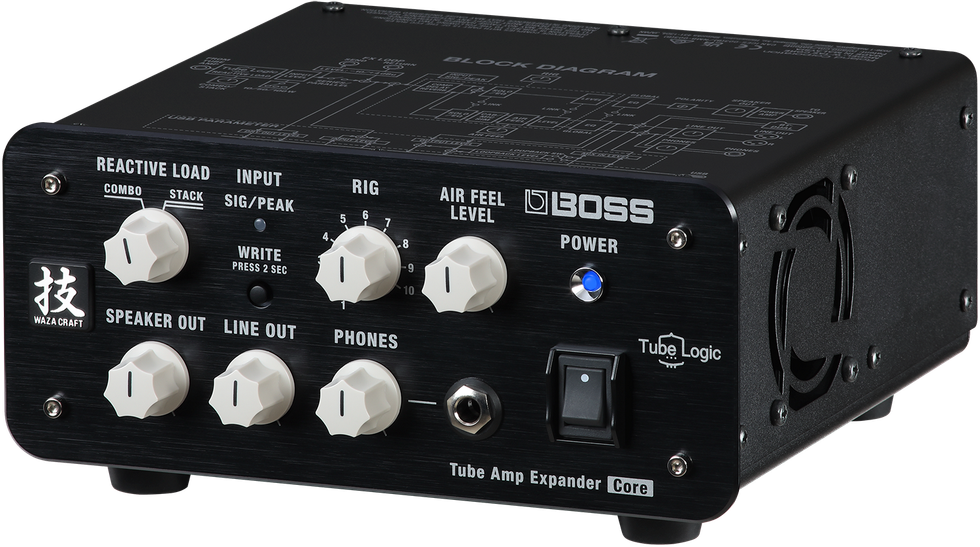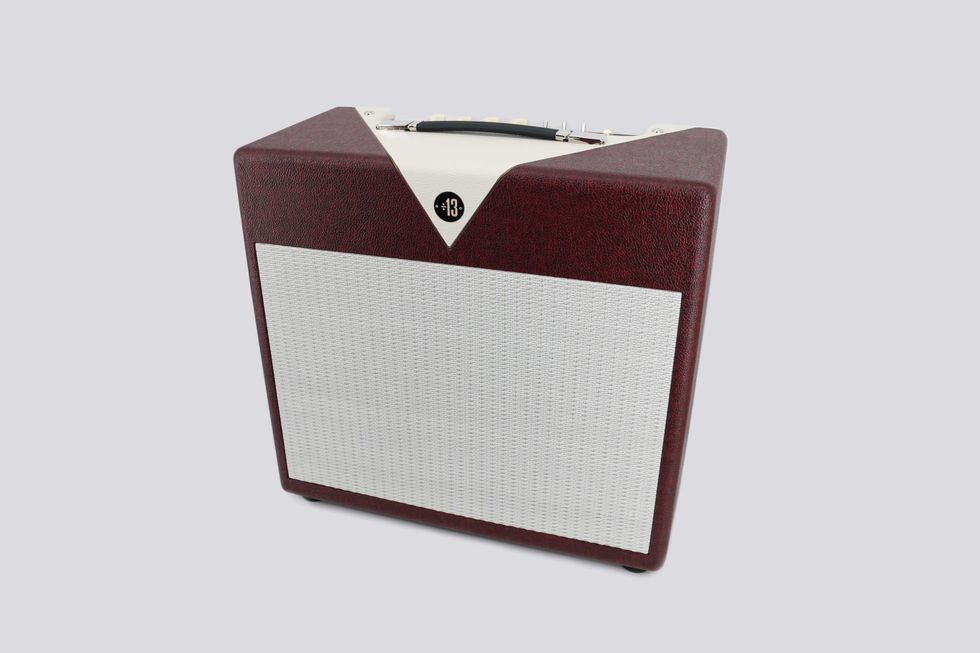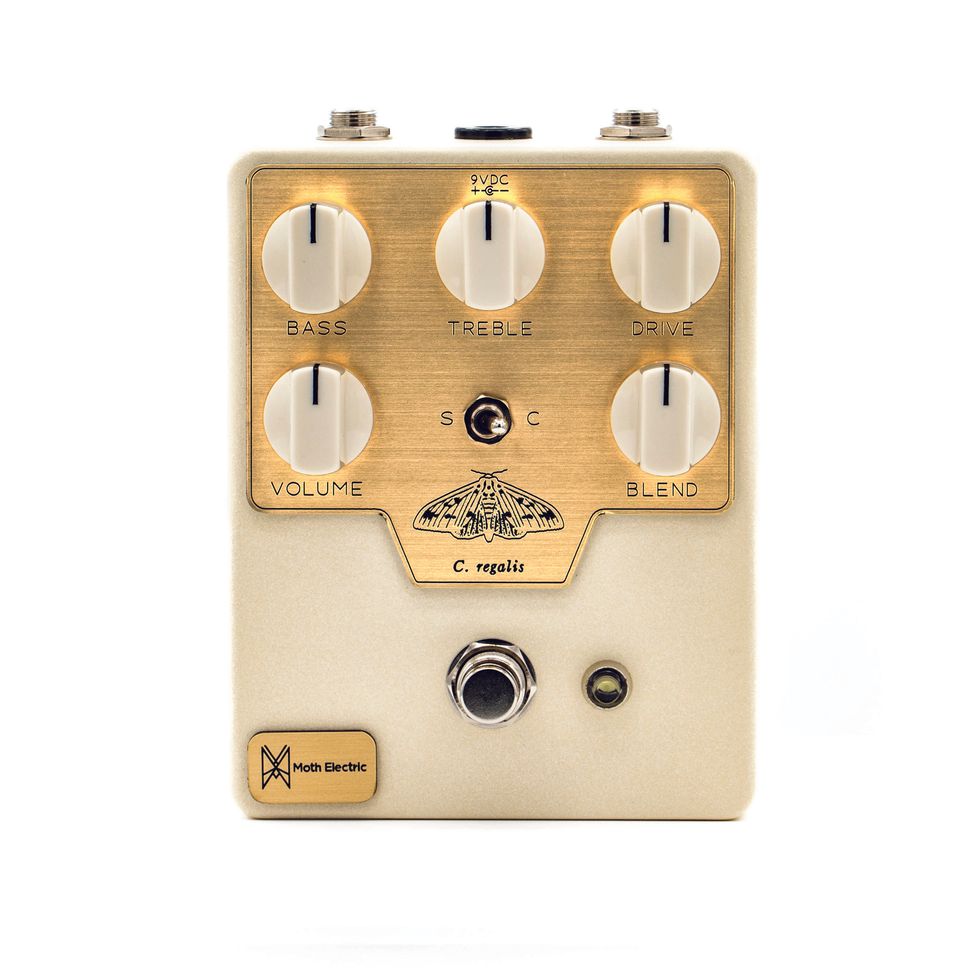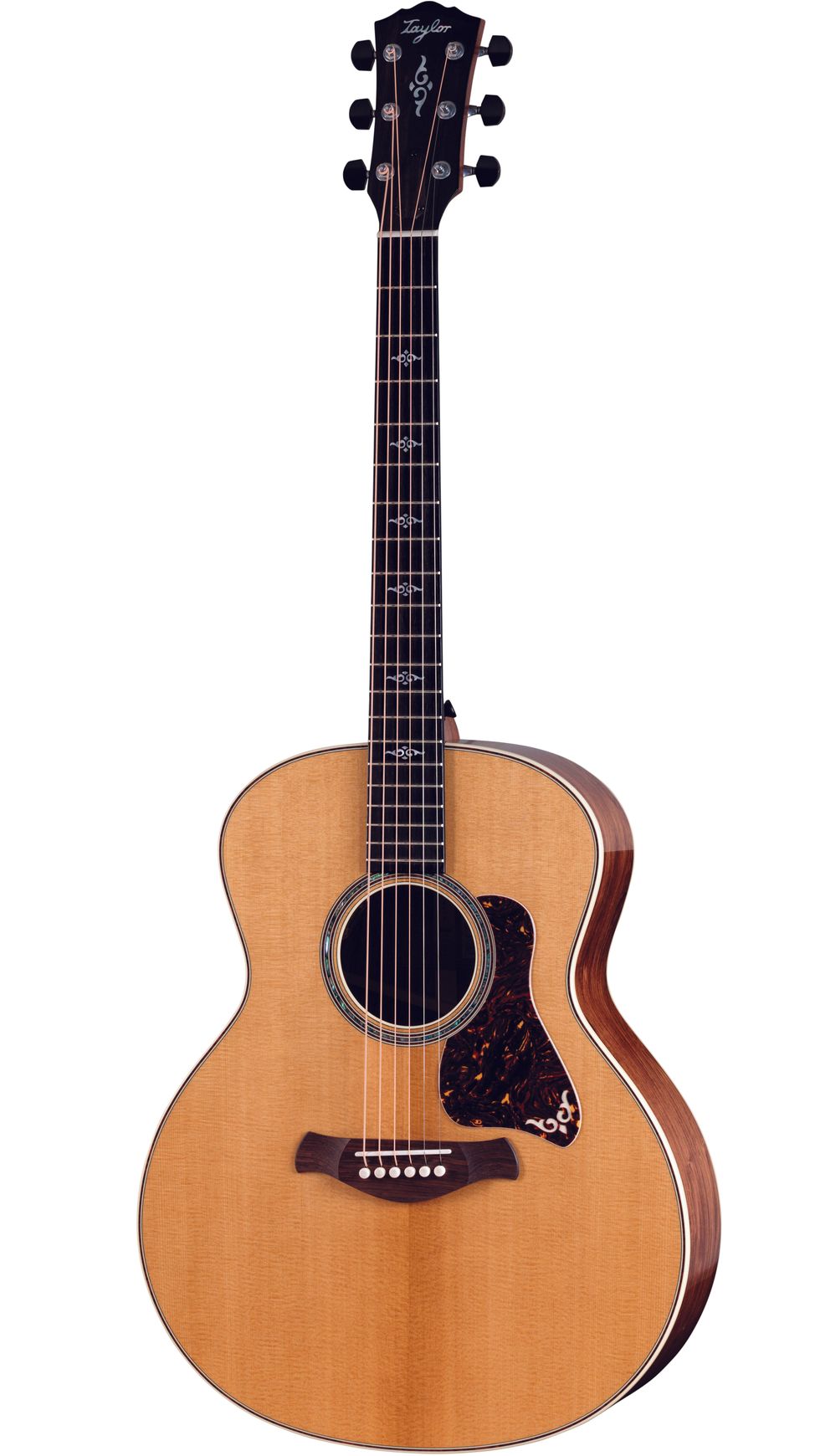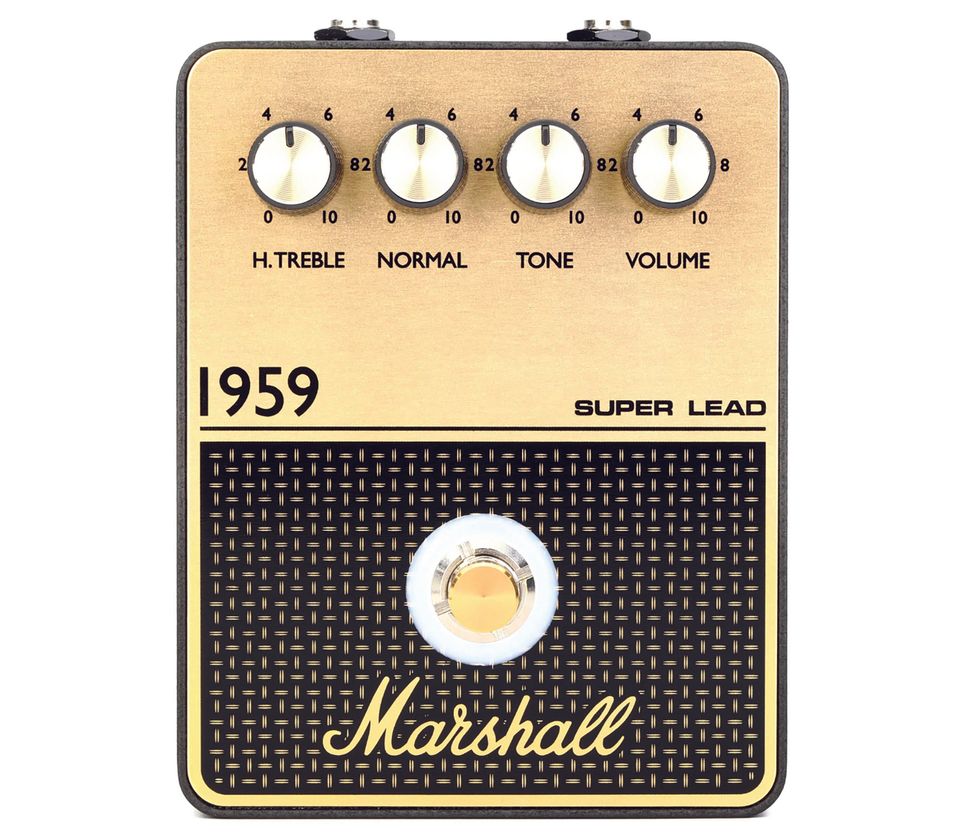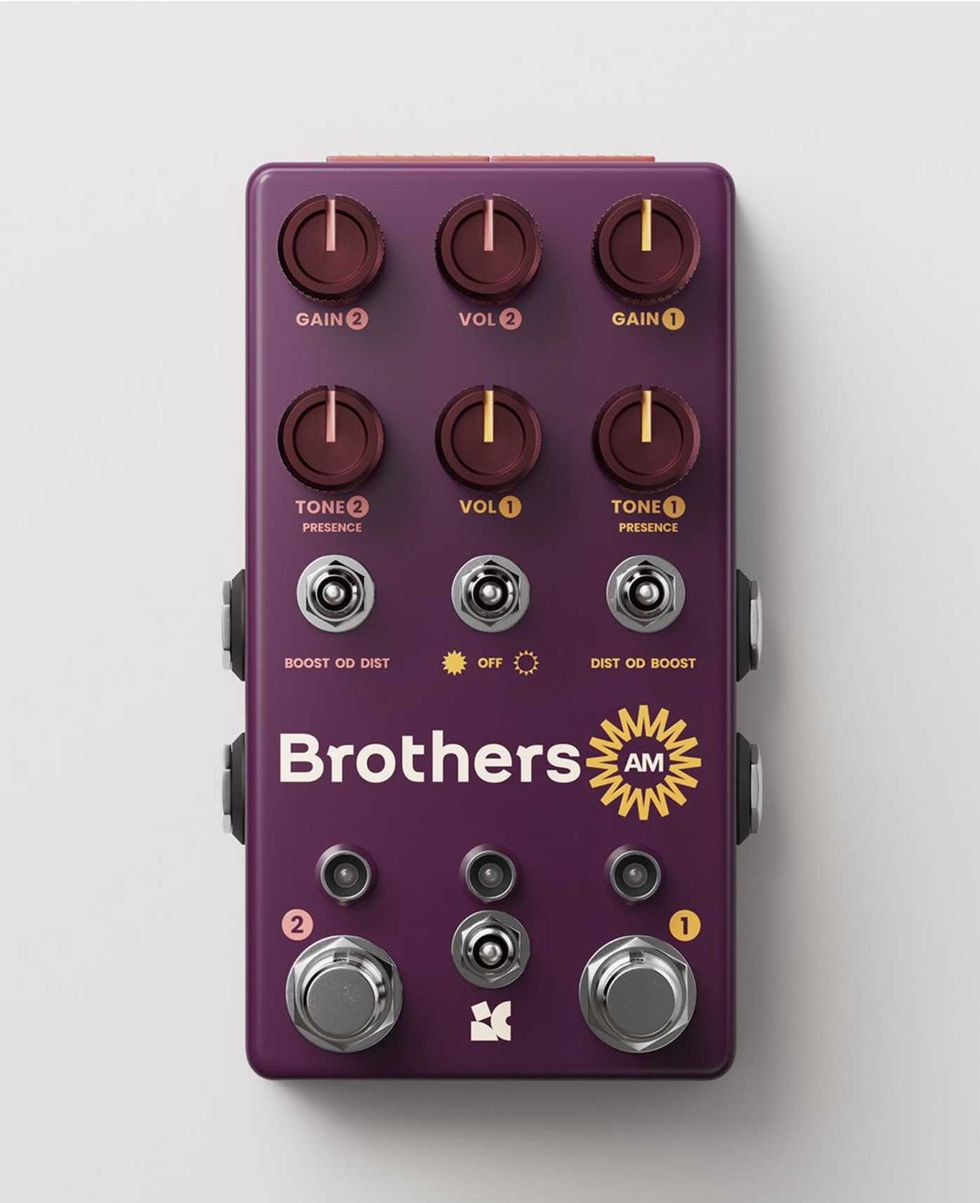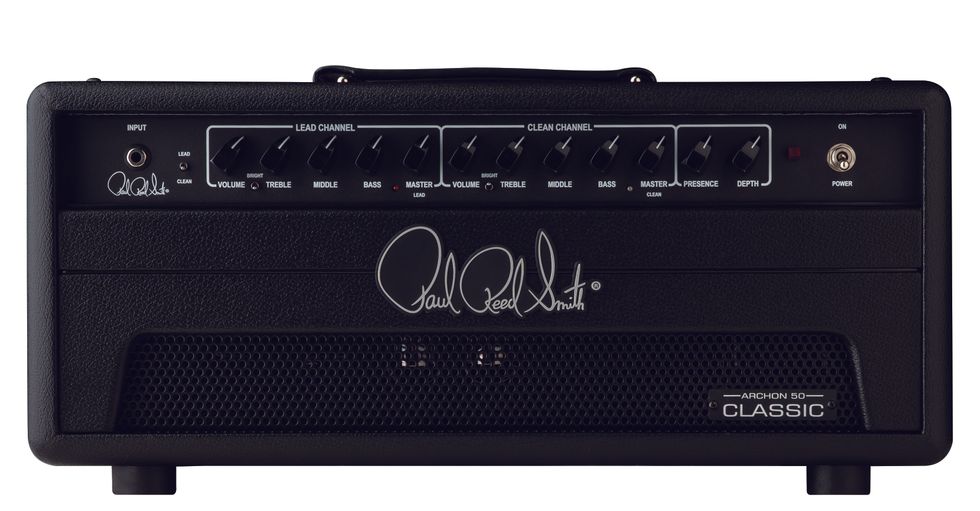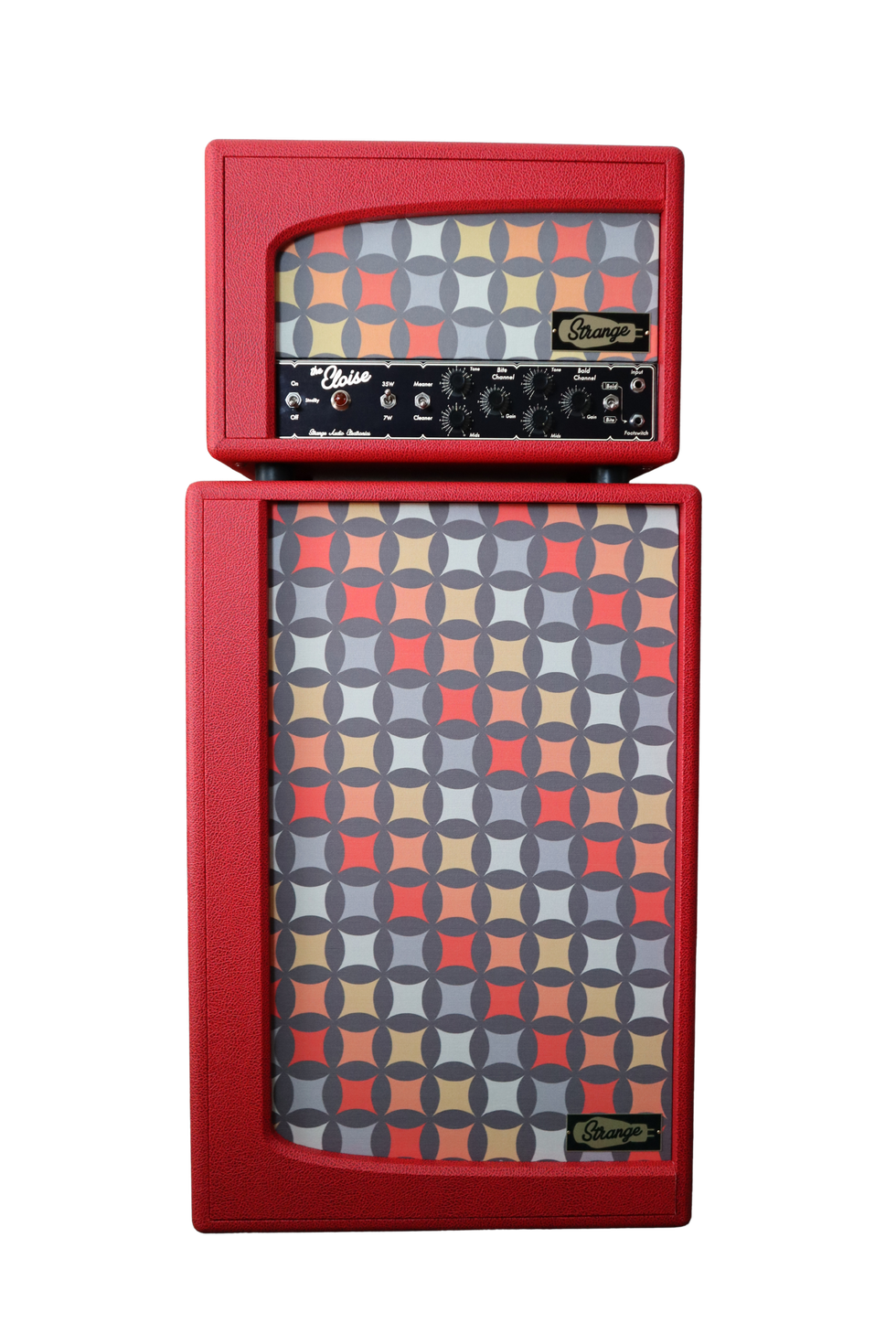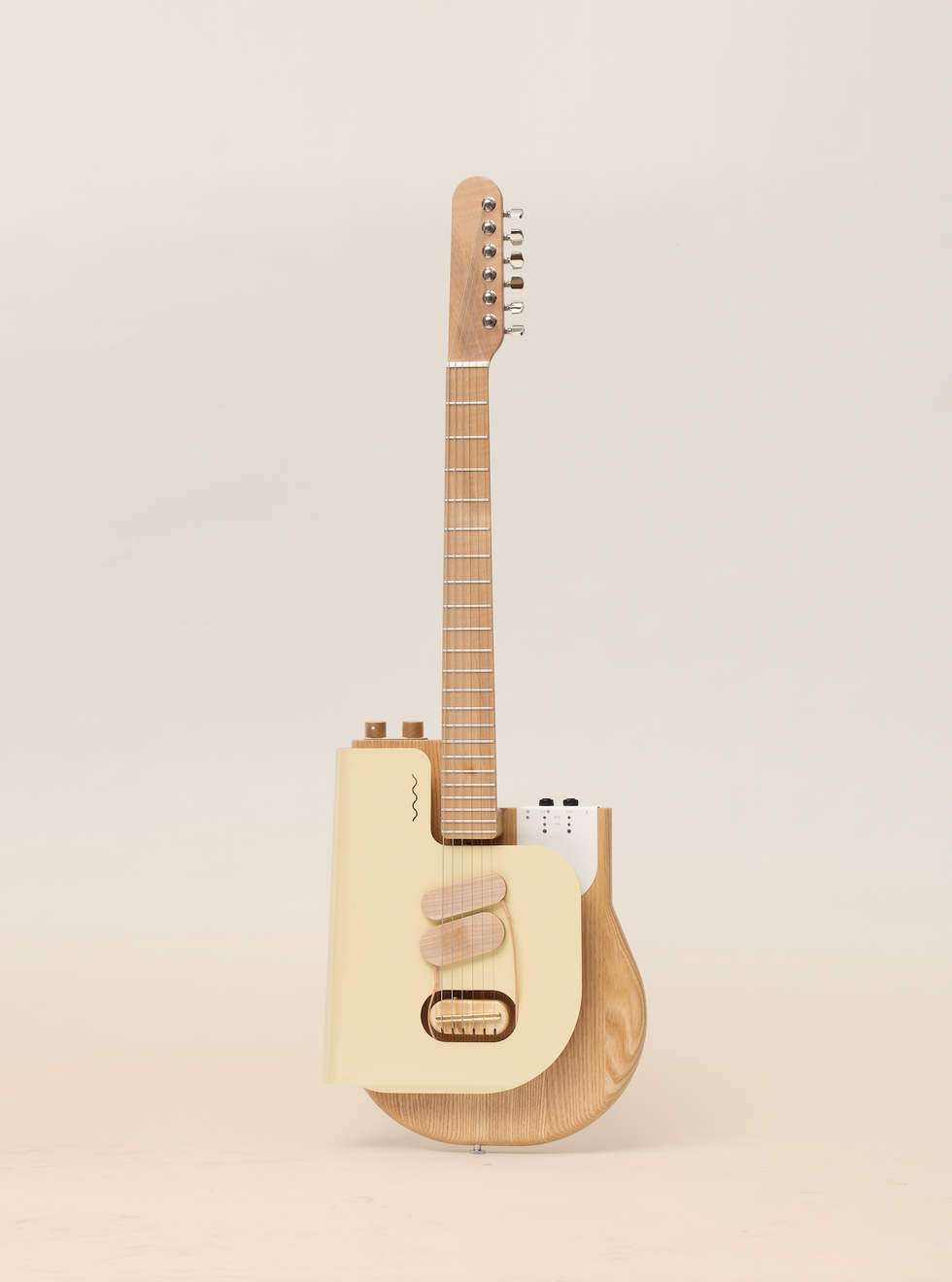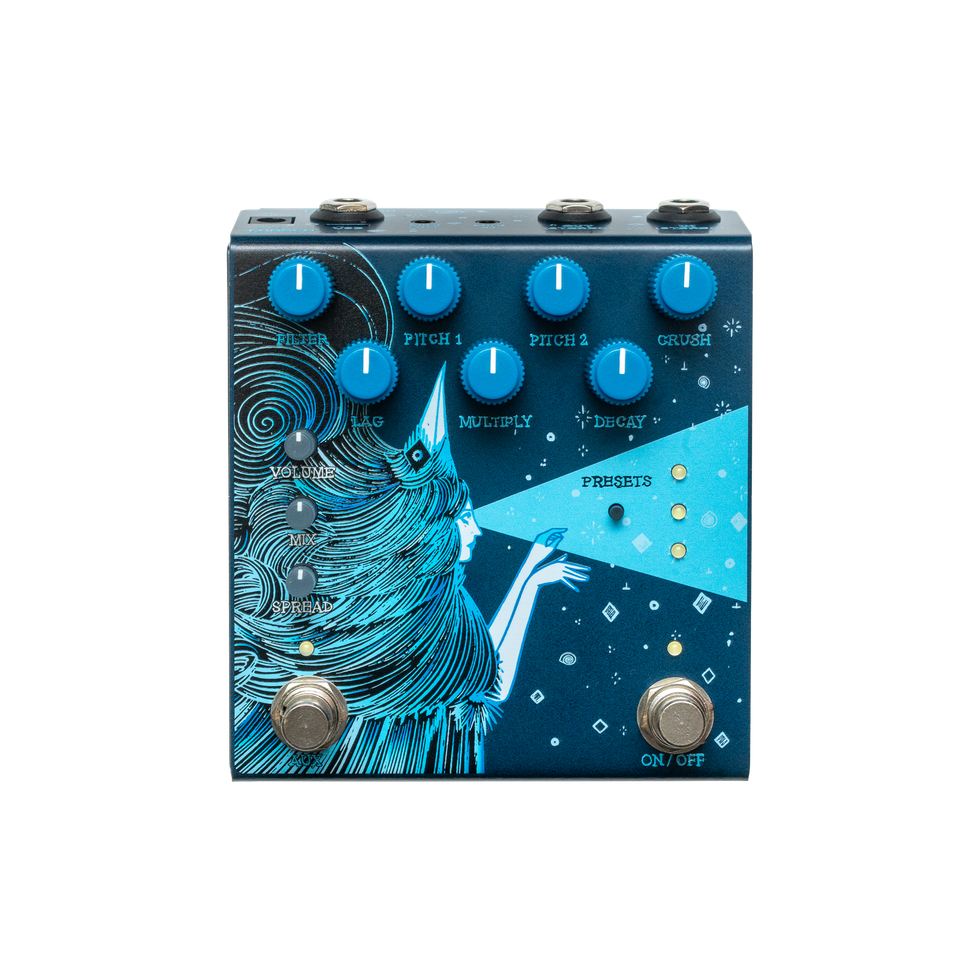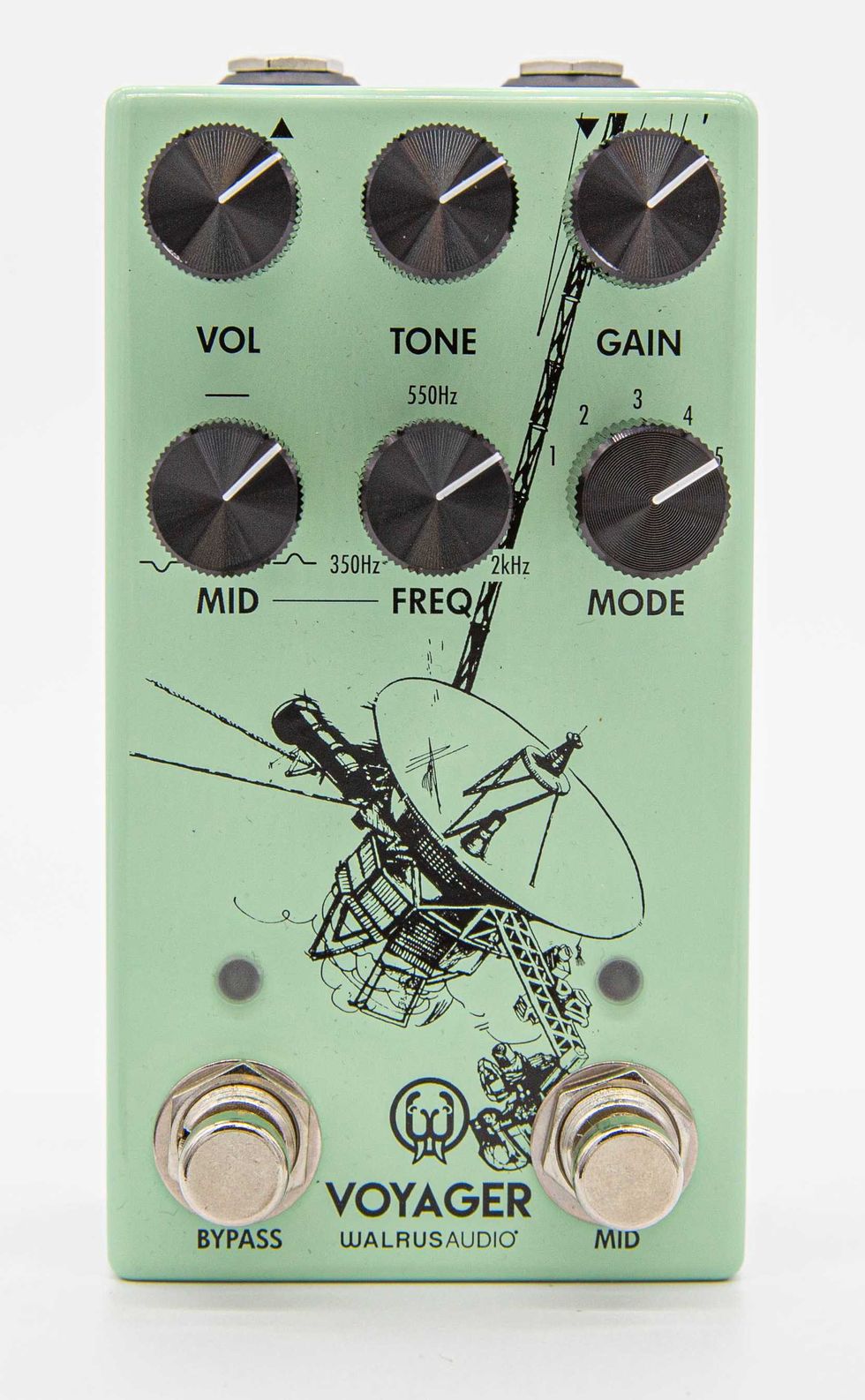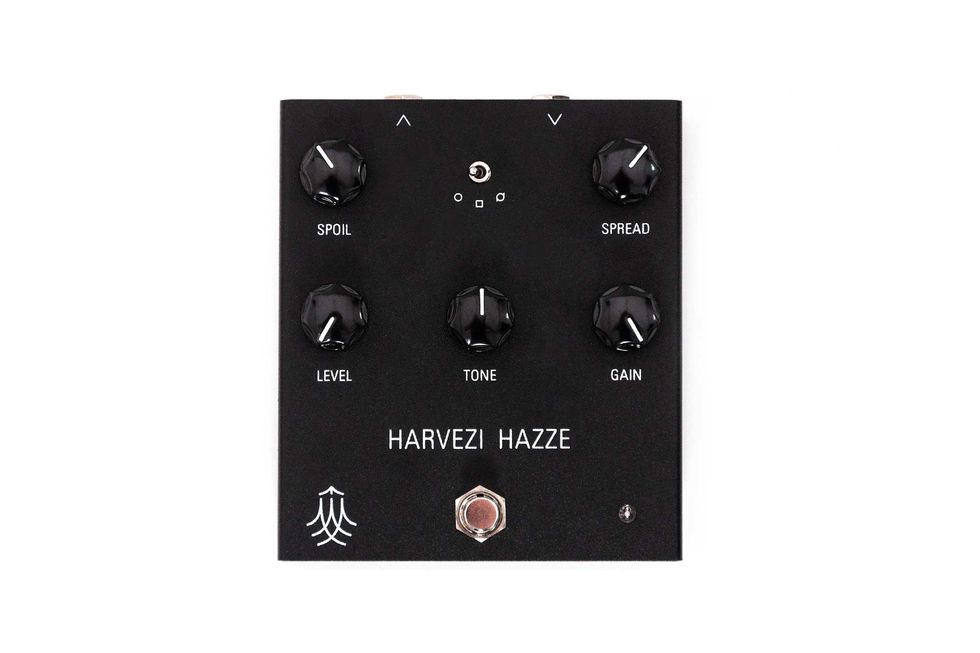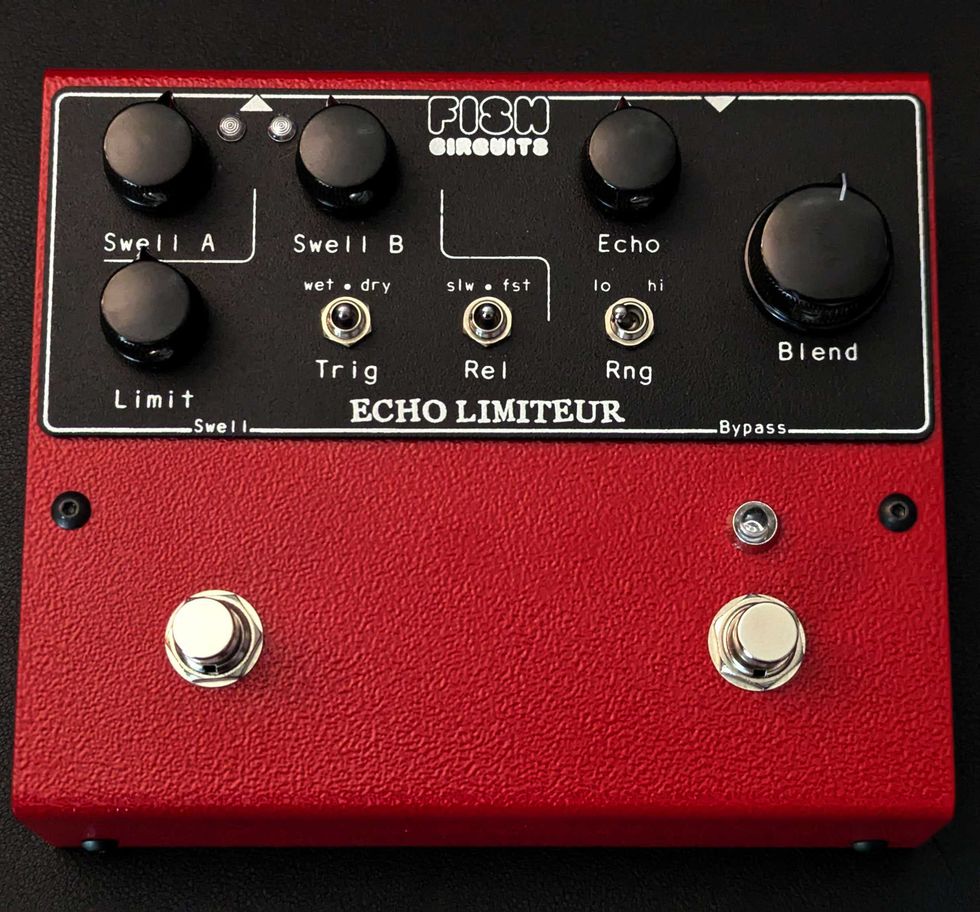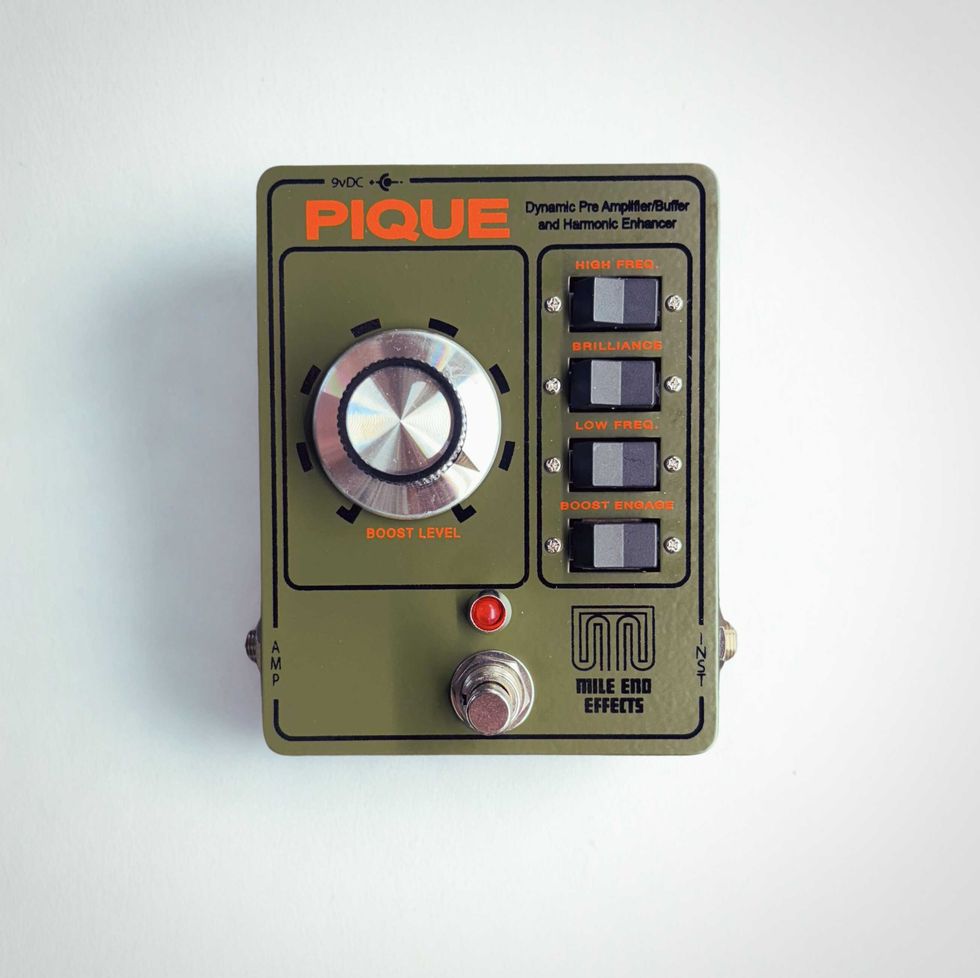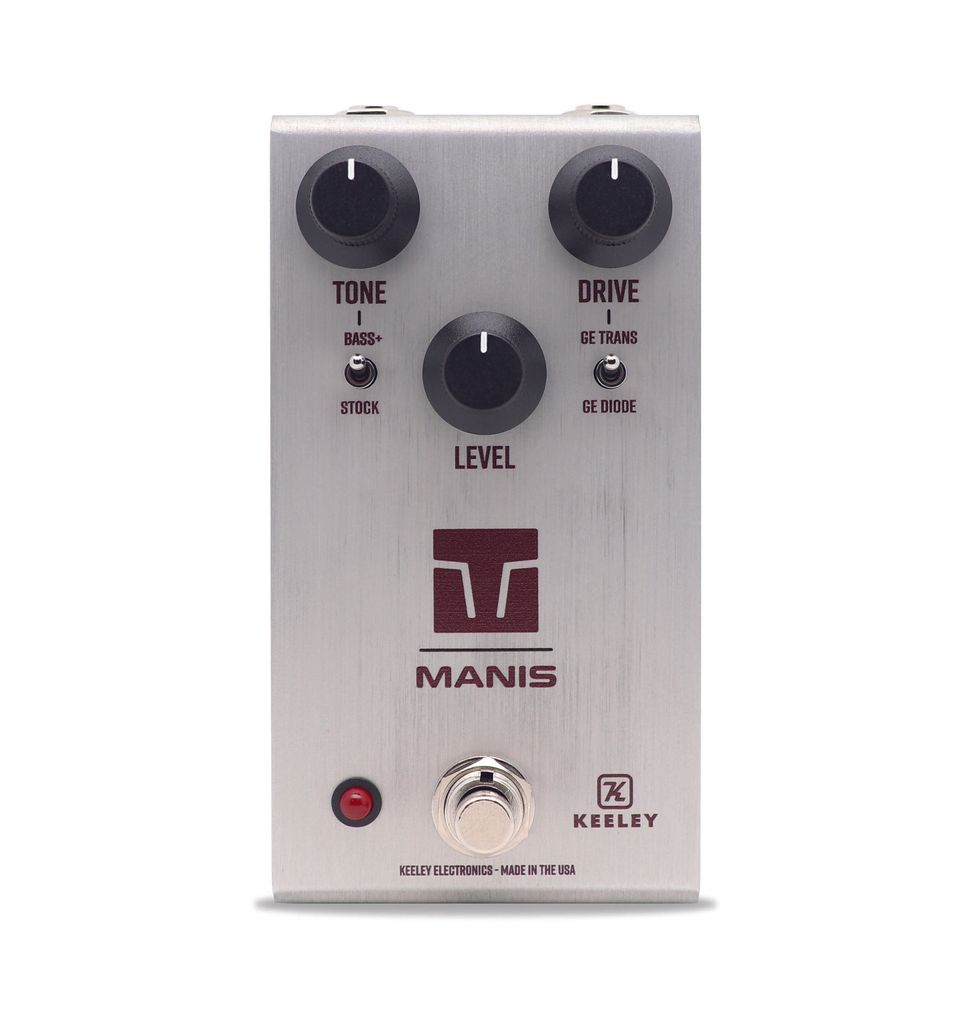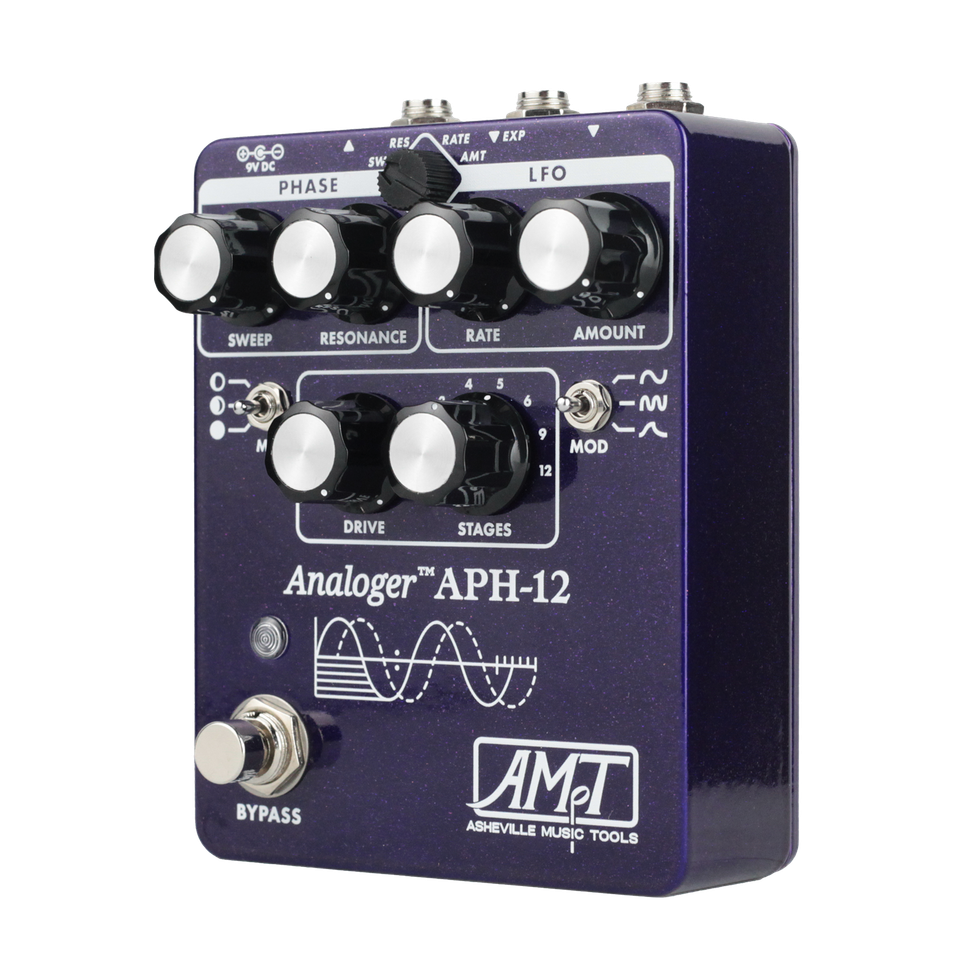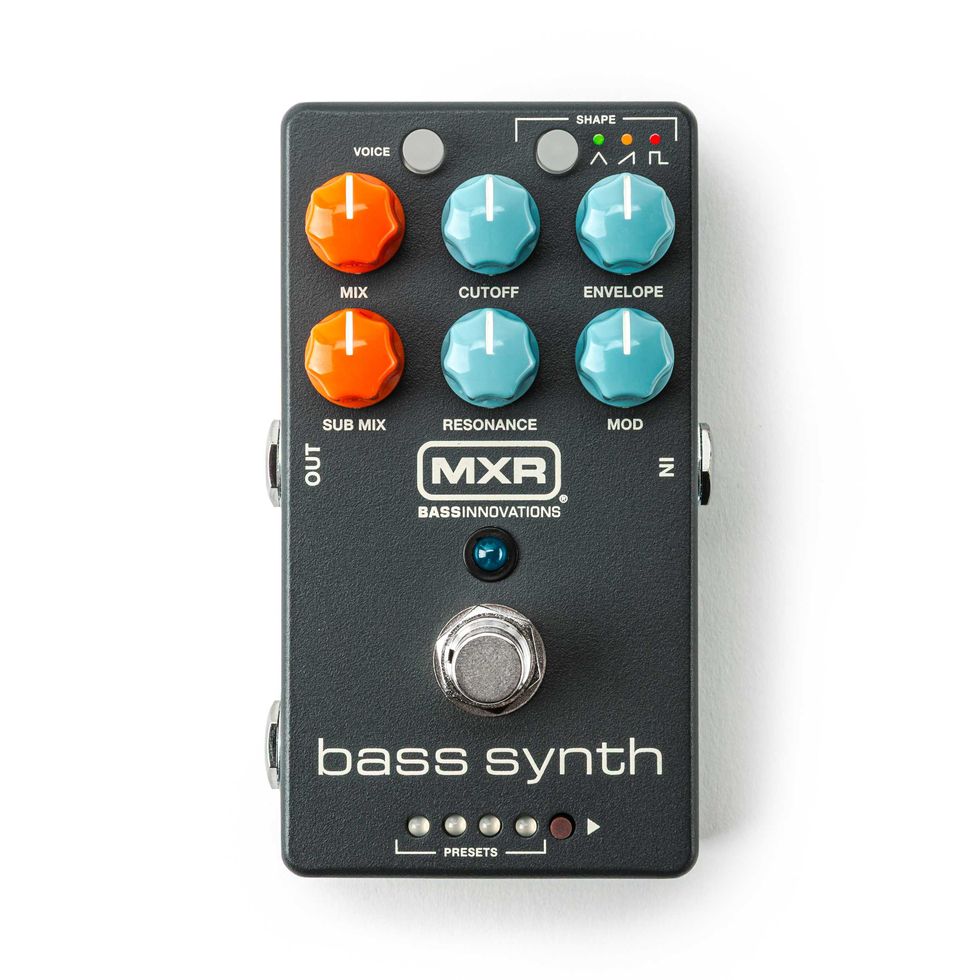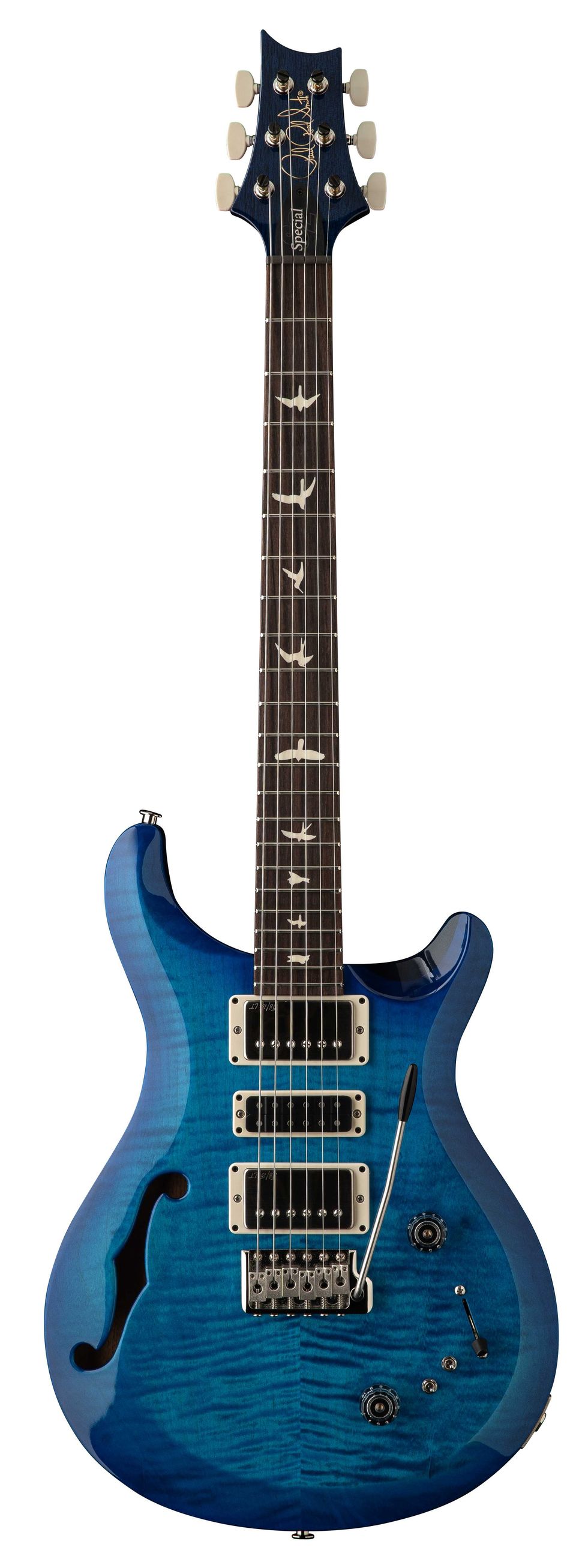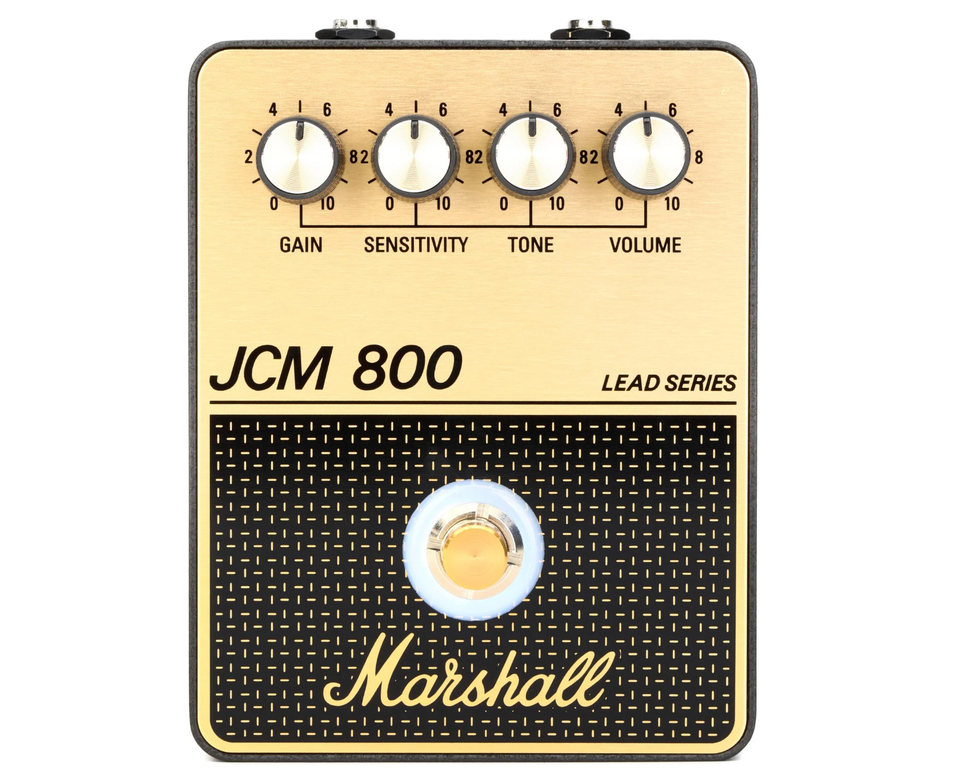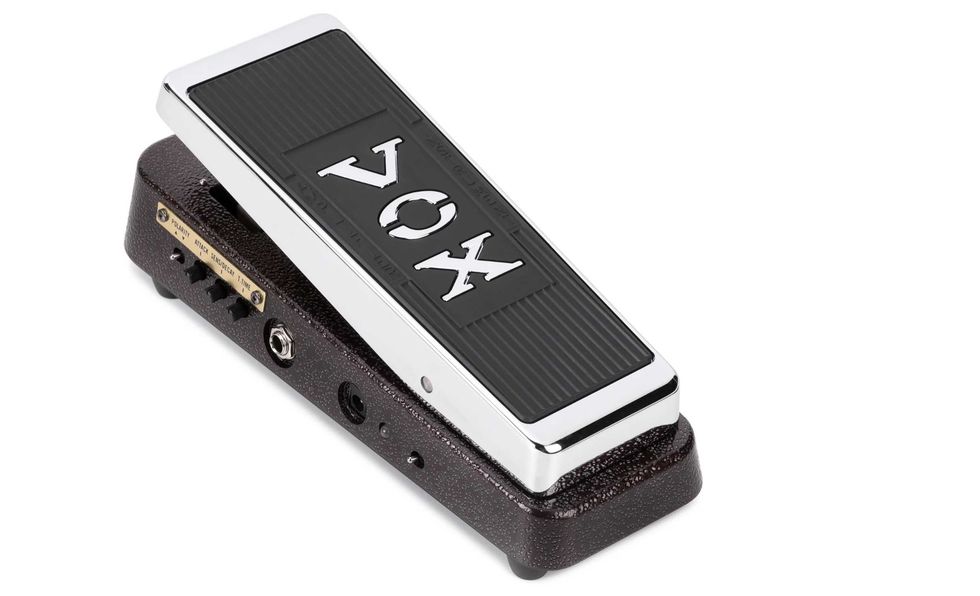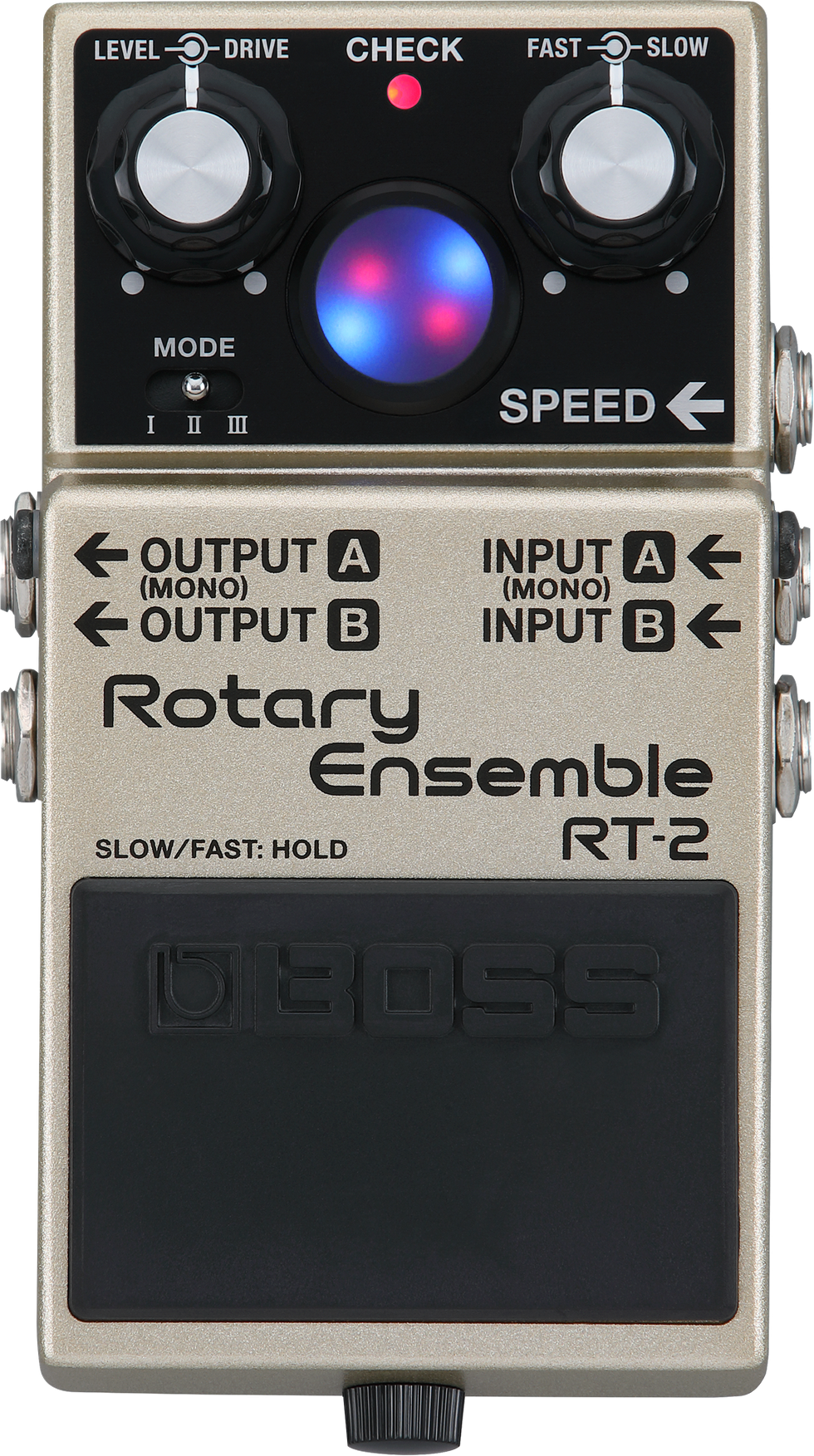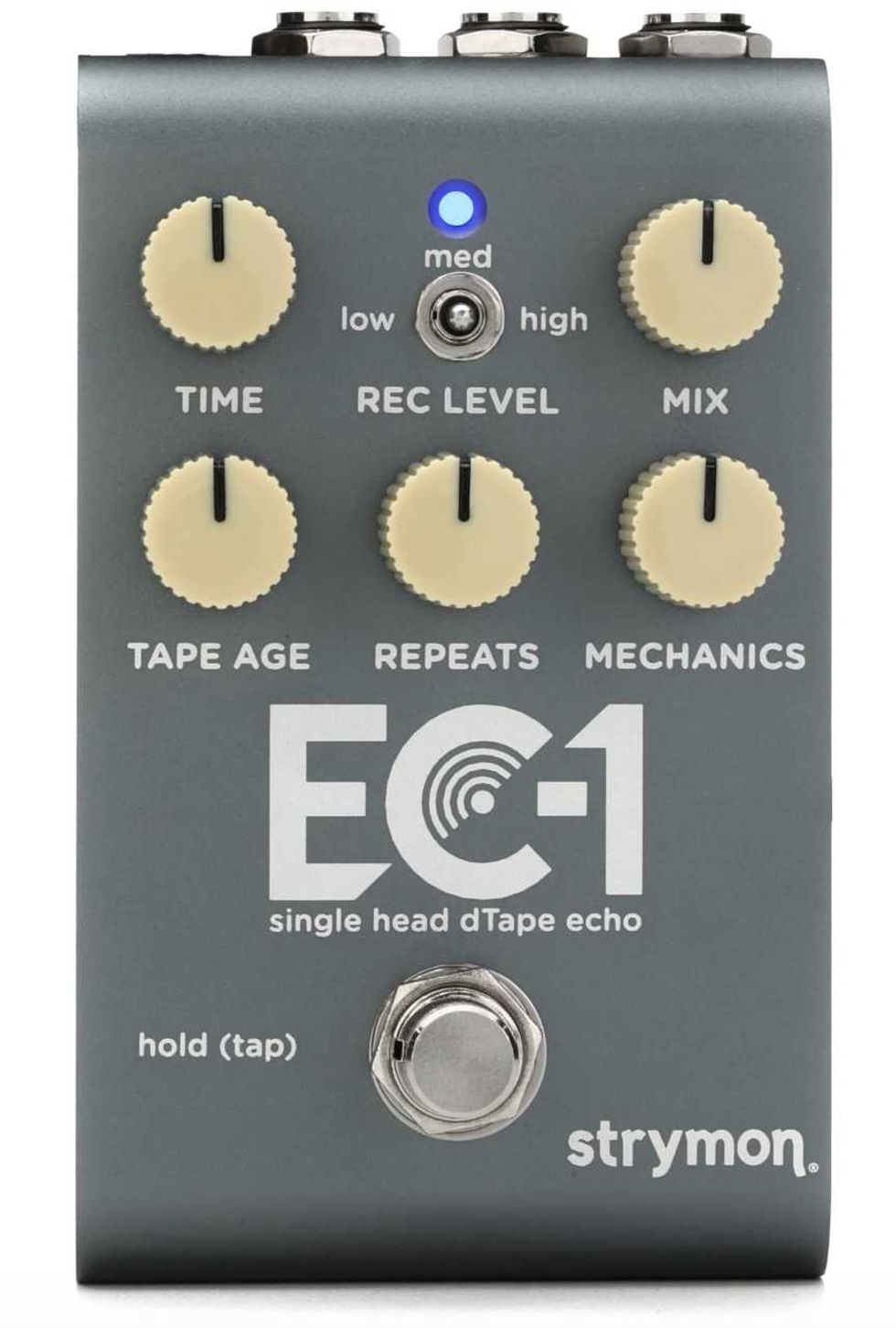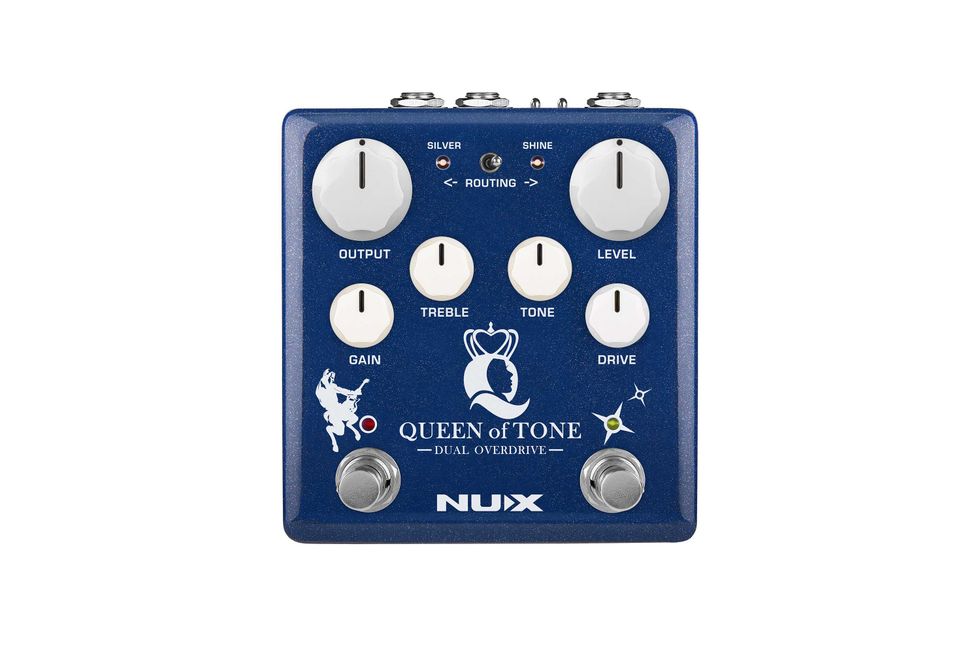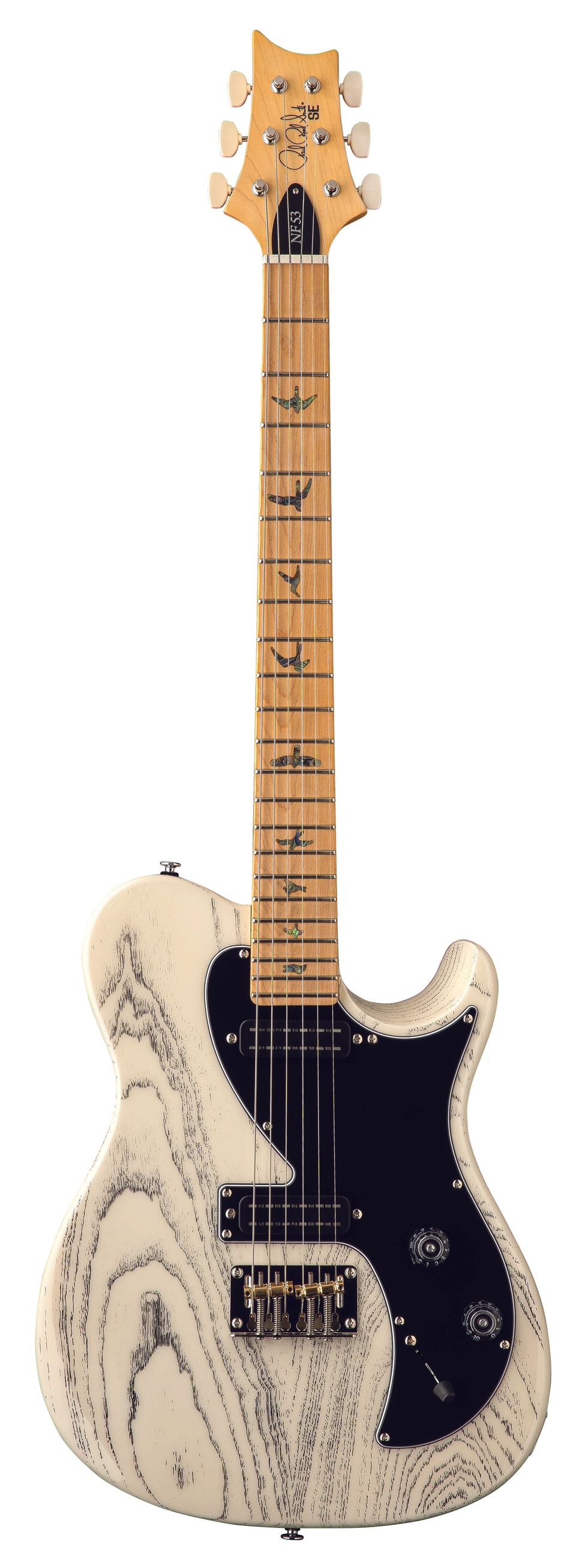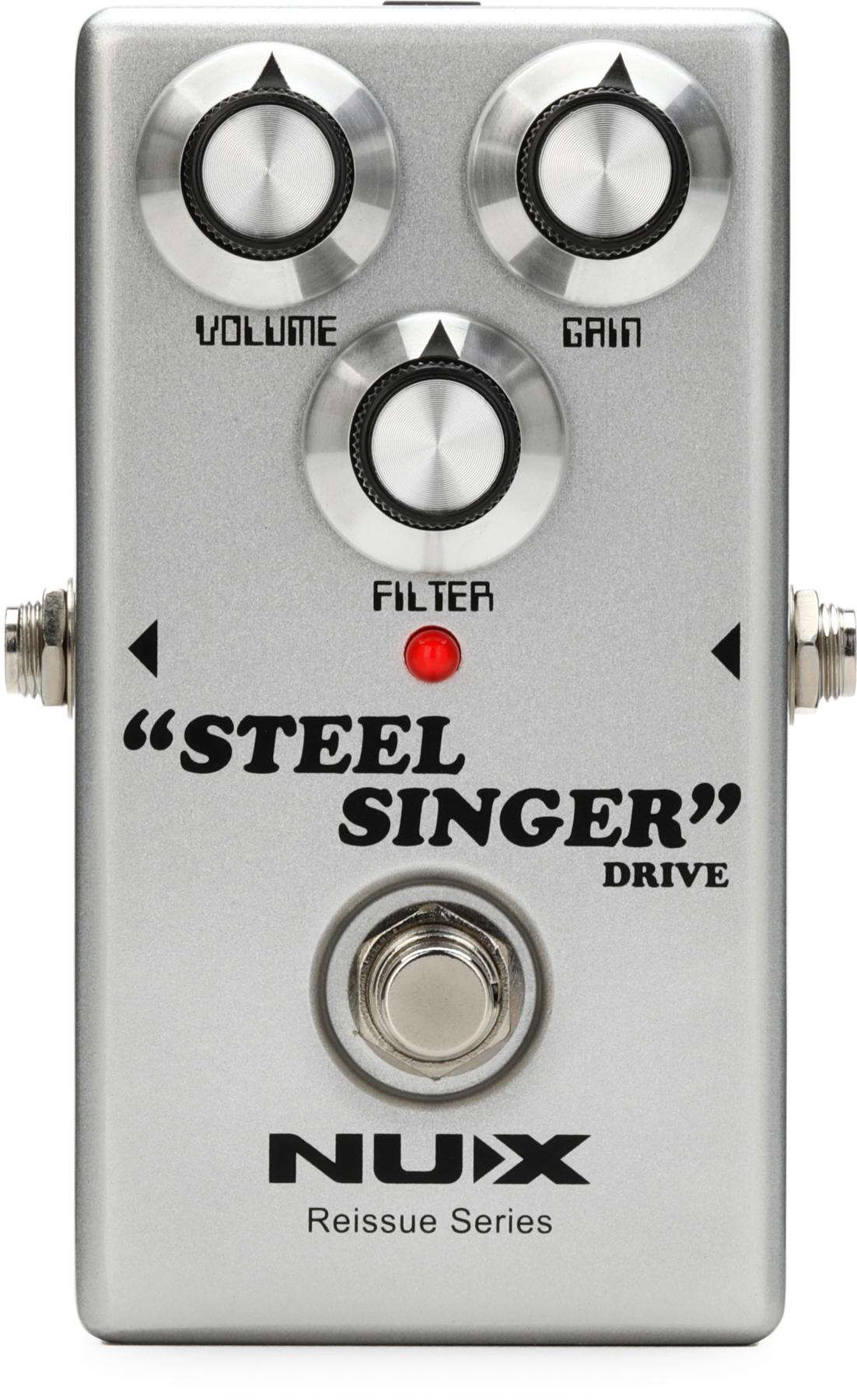EarthQuaker Device’s irreverence is widely celebrated in the pages of this journal. But when you play a pedal like the Pitch Bay polyphonic harmonizer, you realize there’s a whole lot of purpose and substance behind the company’s seemingly devil-may-care approach to pedal design. Sure, the Pitch Bay will help you craft Frankensteinian mutations of crossed octaves and the glitchy sounds of a vintage Atari console dying a painful and gruesome death. But it can just as easily conjure the sounds of a 12-string or help you dial up quick, fuzzy Thin Lizzy or Southern Rock guitar harmonies with a slightly demented edge.
Harmonies Made Mad—and Simple
You could conceivably plug in the Pitch Bay, set the cluster of six knobs randomly, hear the ensuing mayhem, and be justified in never looking back. But a little patience reveals that this is a surprisingly simple, intuitive, and fun-to-use pedal.
tremolo-like wobble.
The two top and left-most knobs enable sweepable pitch adjustments, including all 12 semitones and the microtones in between. One is dedicated to an octave below the root; the other is dedicated to the octave above. The top right knob is a gain control, which you can use to dirty up the harmonized output.
The three lower knobs are level controls for the root-note signal, the octave down, and the octave up, and they give you a lot of flexibility for shaping the harmonized output. While the root-note signal moves through an all-analog signal path, the two octave signals are digitally processed.
Ratings
Pros:
A harmonizer that’s easy to tune. Lots of practical applications and unconventional sounds. Even slightly out-of-tune harmonies sound cool. Sounds fantastic with other effects.
Cons:
A little pricey for the casual user.
Tones:
Playability/Ease of Use:
Build/Design:
Value:
Street:
$225
EarthQuaker Devices Pitch Bay
earthquakerdevices.com
Many Harmonious Means
Dialing in harmonies is easy on the Pitch Bay. And the most natural application is a virtual 12-string (or 18-string, if you prefer). Dialing in the unisons is easy enough—what’s fun is adding slightly off kilter pitches and odd emphasis on one octave or both. Add a short delay and an expansive reverb, and you’re living in a sci-fi, folk-rock utopia.
Classic rock guitar harmonies are another obvious and easy application. But I got a bigger kick out of using the gain and unison harmonies to create a dirty little virtual three-piece horn section. If you can’t afford a trumpet player and baritone and alto sax sidemen, the Pitch Bay plus a simple horn section-style riff make a pretty funky stand-in.
As forgiving and easy as the Pitch Bay can be, dialing in precise semitones can be tricky. The knobs are pretty sensitive and they’re easy to bump out of place. But dialing up slightly out-of-tune octaves or unisons can give the pedal the feel of analog synth pitch drift or add an almost tremolo-like wobble when close harmonies clash just right. Dialing up odd intervals produces even stranger pitch wobbles and cancellations. And while they can easily sound harsh, working these textures in with volume swells or dialing them in at disparate levels can sound like everything from alien radio dispatches to cathedral bells clanging in the distance.
The Verdict
EarthQuaker clearly builds pedals with moody players in mind, because the Pitch Bay can go from pretty and angelic to completely nihilistic and demented with a few twists. And few harmonizing pedals move through those moods as readily and intuitively as the Pitch Bay, and it’s that easy interactivity and musicality that set it apart.


